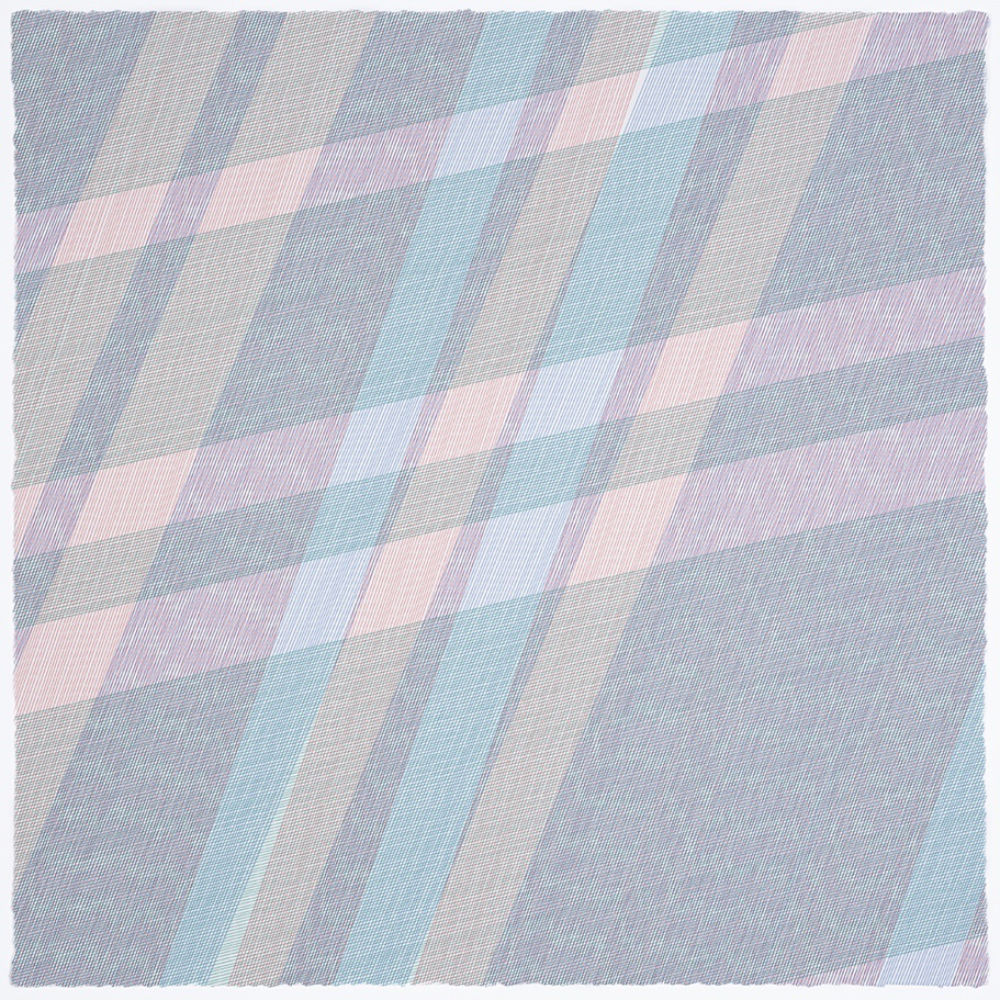This text is in a different format and should be read as an evolving resource. This timeline was created using numerous resources and research, including the Radical Software exhibition catalog published by MUDAM, Lev Manovich's book The Language of New Media, Wikipedia, and my thesis work. This timeline, which is subject to change (the date of the last update is indicated under the title), was initially conceived as an educational tool and remains, by nature, incomplete. Like Lev Manovich's book, it takes the approach of combining information from the history of computing, media, and art in the same space in order to facilitate reading and allow for historical connections.
Enjoy!
- 1613 - First appearance of the word “computer” used to refer to a person who performs mathematical calculations.
- 1757 - A team of "computers" (i.e., calculators), under the guidance of researcher Nicole-Reine Lepaute, calculated the return date of Halley's Comet. Today, an asteroid bears the name of this researcher.
- 1800 - Manufacturing of the Jacquard loom.
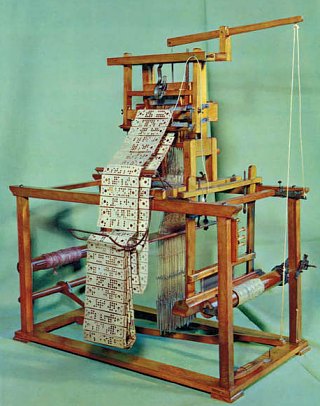
- 1833 - Charles Babbage designs the first programmable calculating machine, the analytical engine. He will only realize it partially.
- 1839 - Invention of the Daguerreotype.
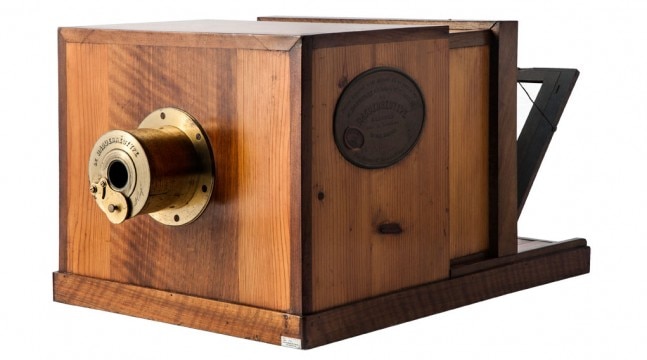
- 1843 - Ada Lovelace writes the first algorithm named Note G intended to be executed by a machine (Babbage's). She is considered the first programmer. She also translates the work Notions on the Analytical Engine by Mr. Charles Babbage.
- 1875 - The Harvard College Observatory in Cambridge, under the impetus of astronomer Edward Charles Pickering, recruits women as "computers" to perform astronomical calculations.
- 1890 - Invention of the Tabulating Machine by Herman Hollerith, a precursor to modern computers. This
calculator was used to process data from the 1890 U.S. Census. This machine would be the
basis of IBM.

- 1893 - Creation of the Black Maria studio by Thomas Edison.
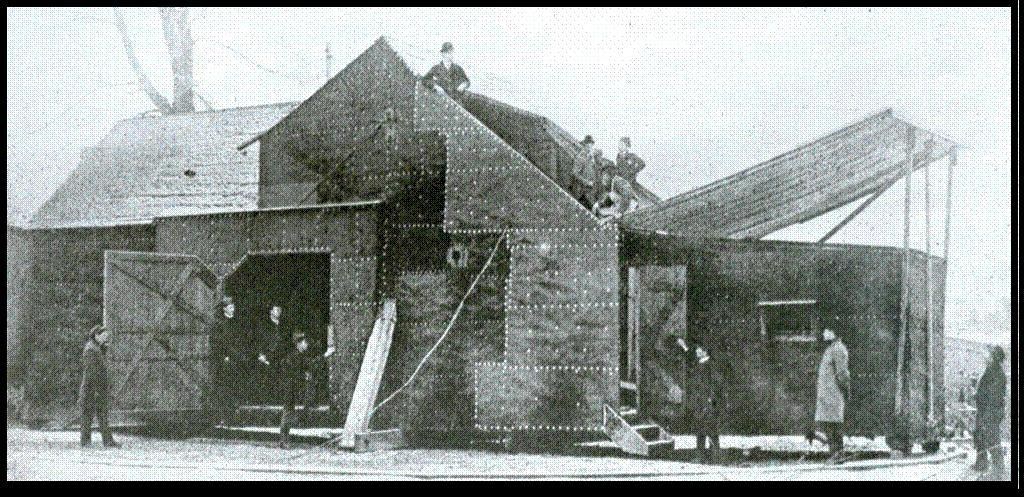
- 1895 - The Lumière brothers' cinematograph.
- 1919 - At University College London, mathematician Eleanor Pairmain writes a pioneering work on digamma and trigamma functions later reissued by Karl Pearson.
- 1920 - Karel Capek writes R.U.R. (Rossum's Universal Robots), a play that introduces the term "robot".
- 1920 - Tristan Tzara, Manifesto on Weak Love and Bitter Love, works on generative writing methods.
- 1929 - Dziga Vertov, L'Homme à la caméra, watch the movie here.
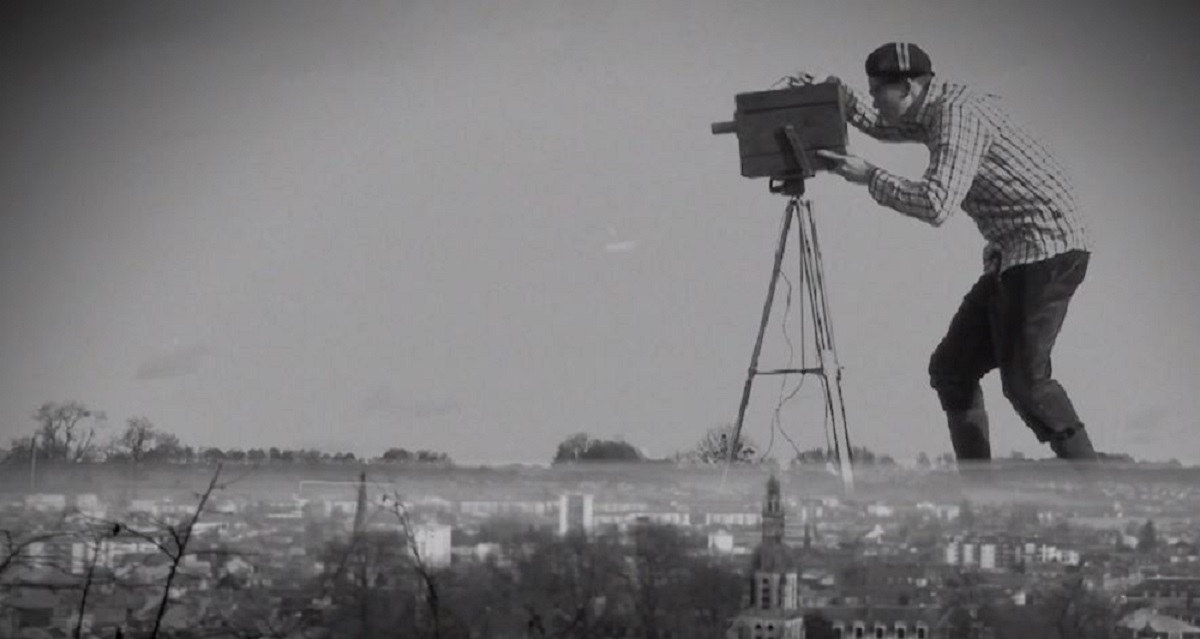
- 1931 - Kurt Gödel writes the first universal programming language.
- 1935 - The US National Advisory Committee for Aeronautics (NACA) recruits women as "computers" to perform complex calculations for aeronautics that will be used during World War II to calculate German positions.
- 1936 - Alan Turing proposes the concept of the Turing machine, a theoretical model of computation that
underpins modern computer science and speaks for the first time of automatic machines.
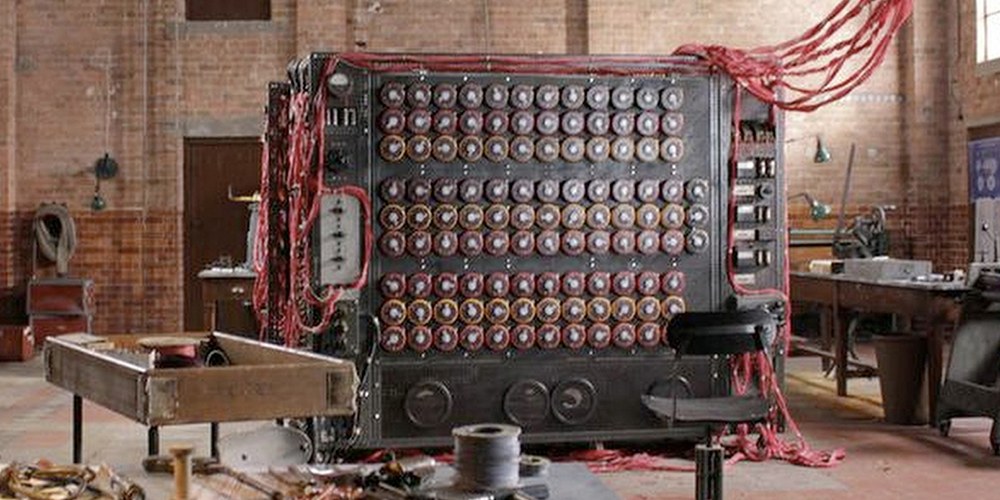
- 1937 - The Z1 by Konrad Zuse, the Z3 will be released in 1941.
- 1942 - Hedy Lamarr co-invents with composer George Antheil a spread spectrum communication system, which will be the basis for Wi-Fi, Bluetooth, and GPS technologies.
- 1943 - The Colossus project, led by the British Government Code and Cypher School at Bletchley Park, is launched to decrypt German communications during World War II. The group is composed of 75% women.
- 1944 - Mathematician and US Navy Rear Admiral Grace Hopper works on the Mark 1 compiler at Harvard. She will write in 1946 A Manual of Operation for the Automatic Sequence Controlled Calculator. She will also popularize the term "bug" to refer to problems in computing. She also enables today the highlighting of women's place in these development processes. The National Defense Research Committee nicknamed them the "kilogirls" in reference to the hundreds of hours of work done by women on algorithms.
- 1946 - A group of 6 women develop the ENIAC, the first fully electronic computer.
- 1947 - The SEA in France (Société d'Électronique et d'Automatisme) is founded with scientist François-Henri Raymond. The company will produce hundreds of computers in the decades to come.
- 1948 - Mathematician Norbert Wiener publishes Cybernetics: Or Control and Communication in the Animal and the Machine, laying the foundations of systems theory and communication and providing the basis for cybernetics.
- 1950 - Mathematician and artist Ben Laposky uses an oscilloscope to produce the first
abstract electronic image.
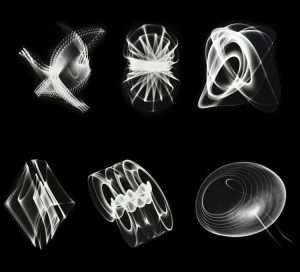
- 1951 - Betty Holberton, one of the six women who developed the ENIAC, becomes one of the first programmers in history by developing the Sort-Merge Generator for the UNIVAC (Universal Automatic Computer). It is one of the first programs designed to be executed by a machine. She will also insist that the exterior of the machine, which was black at the time, be repainted beige for its presentation. This color will remain for generations of machines to come.
- 1952 - Grace Hopper creates the first code compilation program to translate code from one
program to another. This technique will be marketed in England by Marie
Coombs and used by artist Mary Ellen Bute for her generative film Abstronic in 1956.
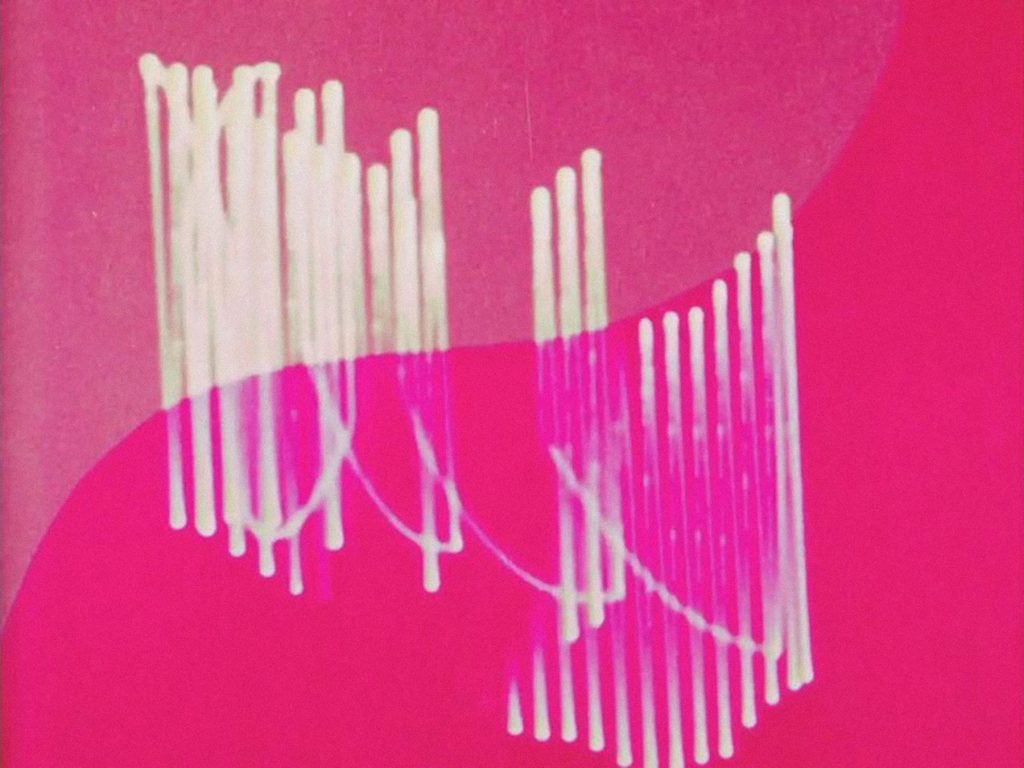
- 1953 - Researcher Bertram V. Bowden writes the first historical work on computing and will also be the first to highlight the role of Ada Lovelace in the creation of modern computing and algorithms.
- 1954 - Max Bense publishes Aesthetica, the first of four books developing a theory of art based on mathematical images.
- 1955 - Vera Molnár, Lent mouvement bleu orange rouge et noir.
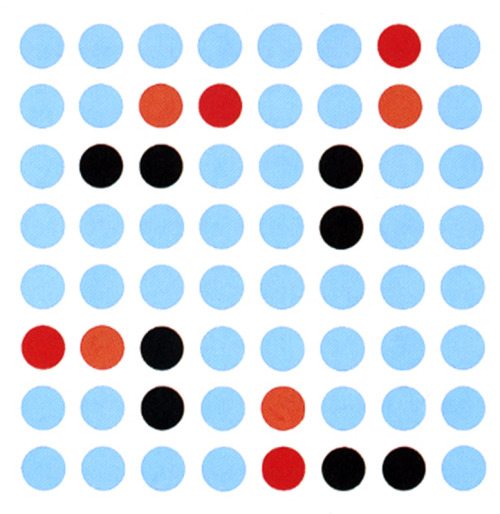
- 1956 - Lejaren Hiller presents a recital of generative music using algorithms on an
ILLIAC 1 computer.
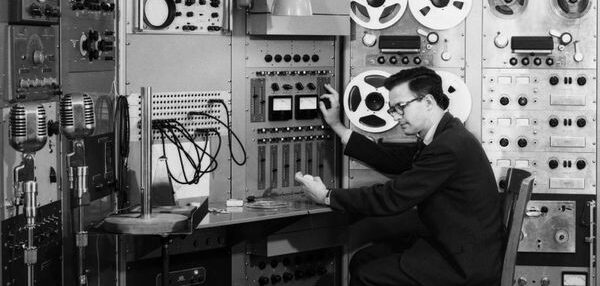
- 1957 - At Bell Telephone Laboratory, Max Matthews develops the first synthetic music program called MUSIC 1 on IBM 704.
- 1957 - Vera Molnár, Lent mouvement giratoire.
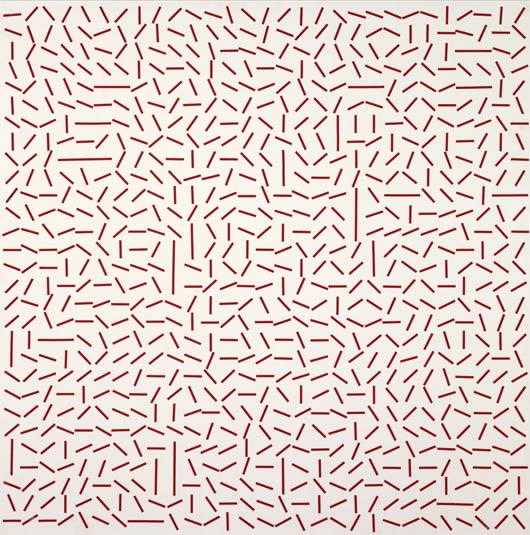
- 1960 - IBM commercializes its 1400 and then its 1401, which will enable the deployment of computing in laboratories and businesses.
- 1960 - NASA launches its first satellite programs.
- 1960 - The Oulipo group, focused on literature and mathematics, develops work on structures and patterns usable in writing. It is at this time that Raymond Queneau creates Cent mille milliard de poèmes, programmed on a CAB 500.
- 1961 - First major international exhibition on the experimentation of these technologies in art with the exhibition nove tendencije at the Gallery of Contemporary Art in Zagreb. This exhibition will have several iterations.
- 1961 - John Whitney, Catalog.
- 1962 - Michael Noll develops his first series on an IBM 709.
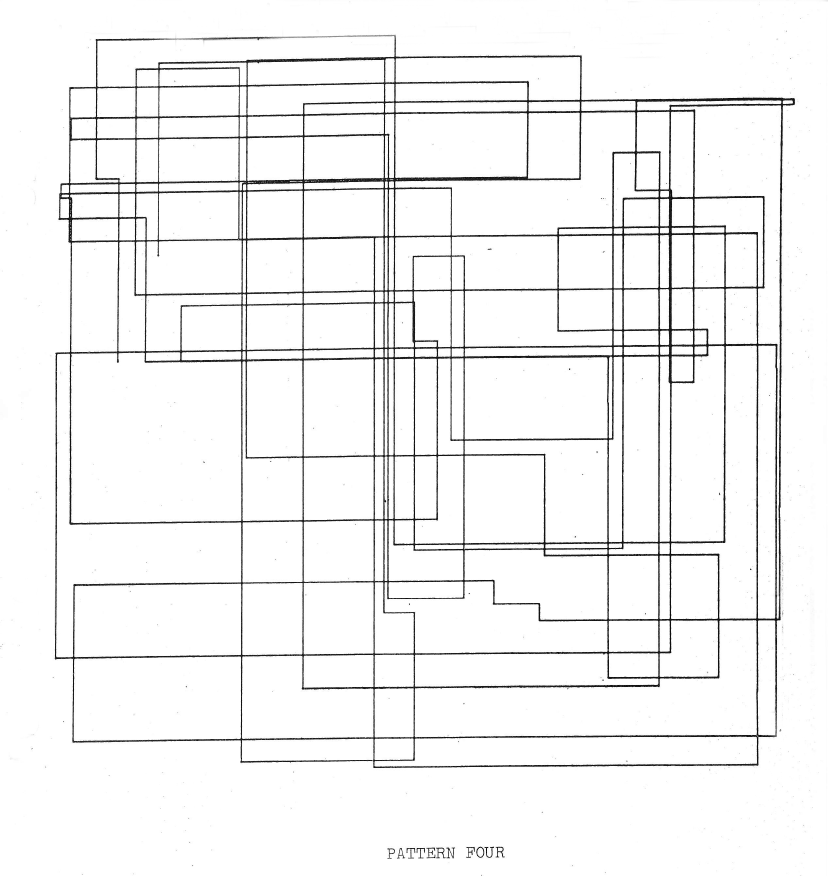
- 1963 - In San Jose, international exhibition of computer-generated art with San José and the Spartan Bookstore.
- 1963 - Edward Zajac creates his film Orbit on an IBM 7090 and on FORTRAN.
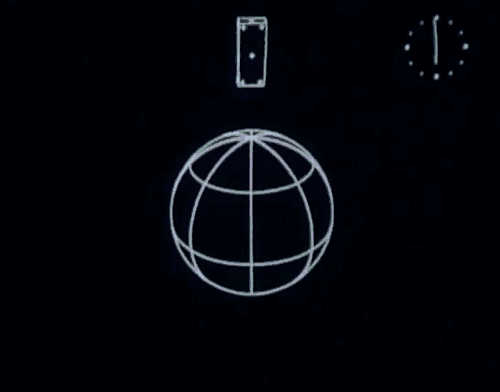
- 1963 - Ivan Sutherland develops "Sketchpad" at MIT, a revolutionary program for computer-aided design.
- 1964 - At the University of Pittsburgh, choreographer Jeanne Hays Beaman and software designer Paul Le Vasseur work together on a random choreographic system for dancers. The following year Beaman writes the article Computer Dance.
- 1965 - Mary Allen Wilkes creates the LINK, the first 12-bit minicomputer.
- 1965 - The MoMA in New York opens the exhibition The Responsive Eye including a series of 123 programmed works including those of Sue Fuller, Lily Greenham, and Bridget Riley.
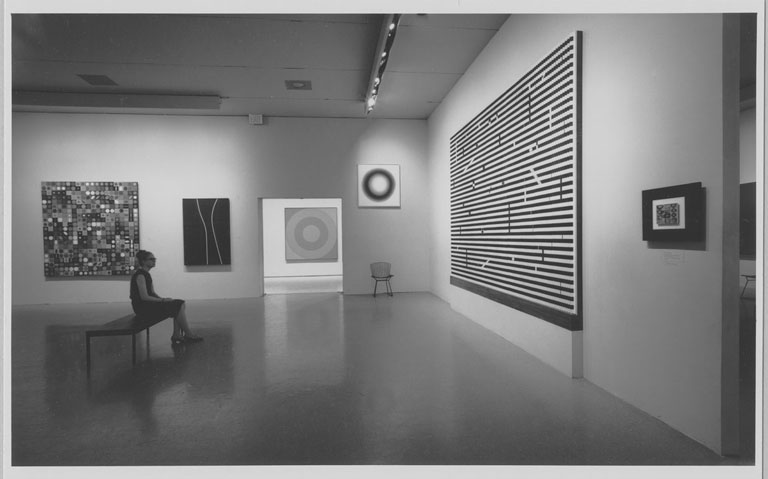
- 1965 - Margaret Hamilton works on the software that will serve the Apollo mission at MIT. She will also introduce the profession of "software engineering". This software will be the basis for the 1969 moon landing mission.
- 1965 - Georg Nees presents Computergrafik at the Studiengalerie in Stuttgart. A series of influential artists exhibit alongside Georg Nees' students. This exhibition remains a benchmark for the early days of generative art, as does its catalog.
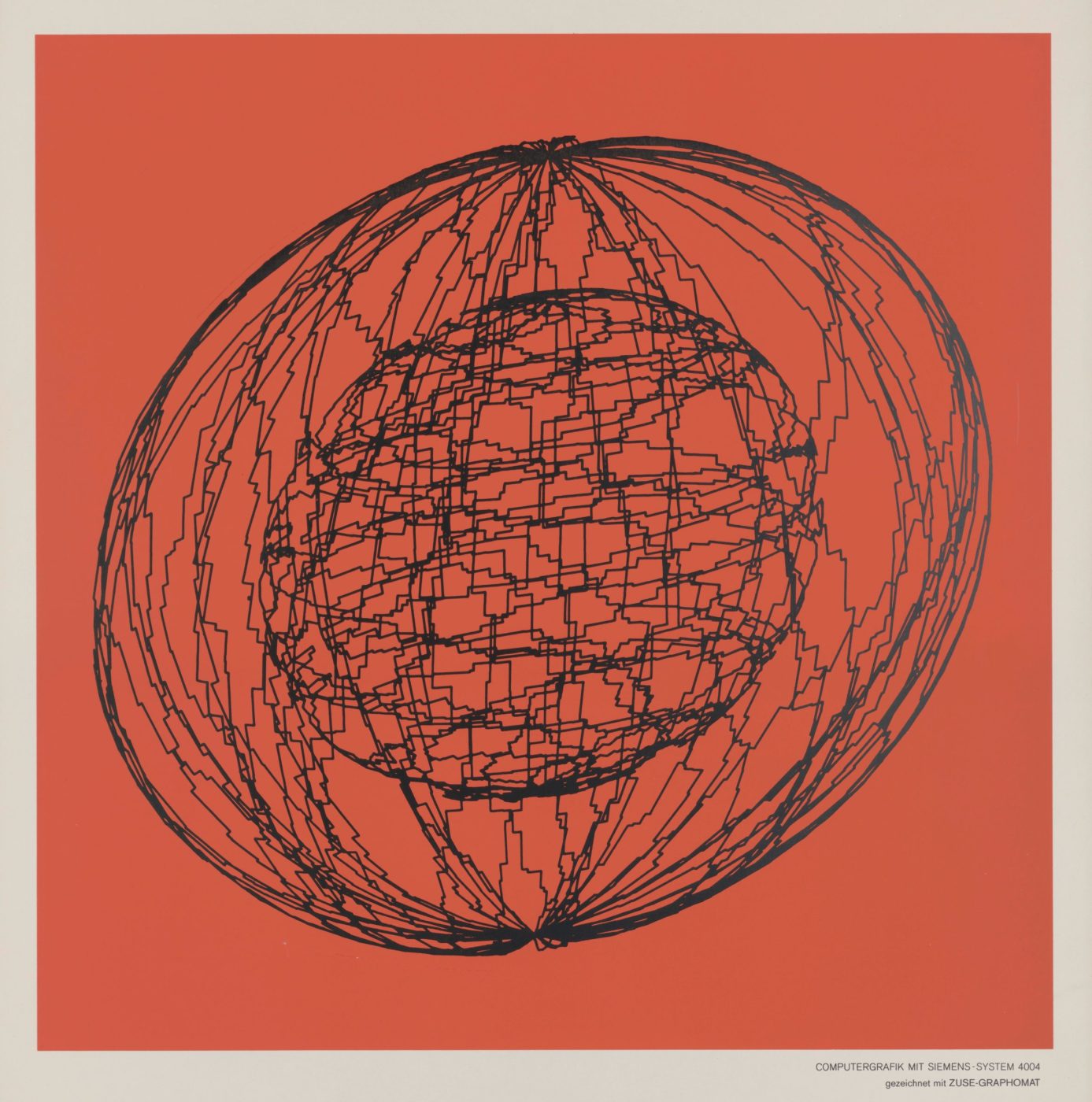
- 1966 - In Vienna, artist Otto Beckmann founded the Ars Intermediale Group
- 1966 - Inge Borchardt, Untitled (Serie A).
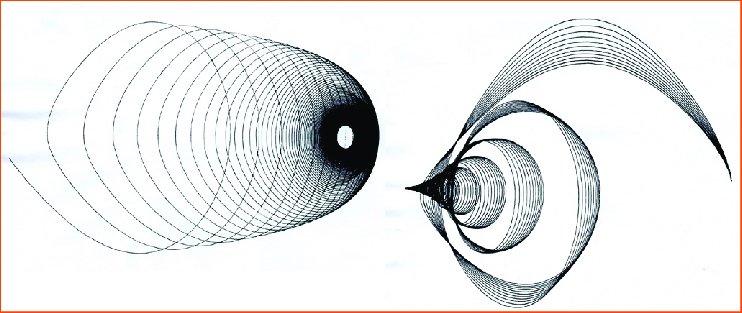
- 1967 - Ken Knowlton and Leon Harmond present in Robert Rauschenberg's New York studio
Computer Nude (Studies in Perception 1).
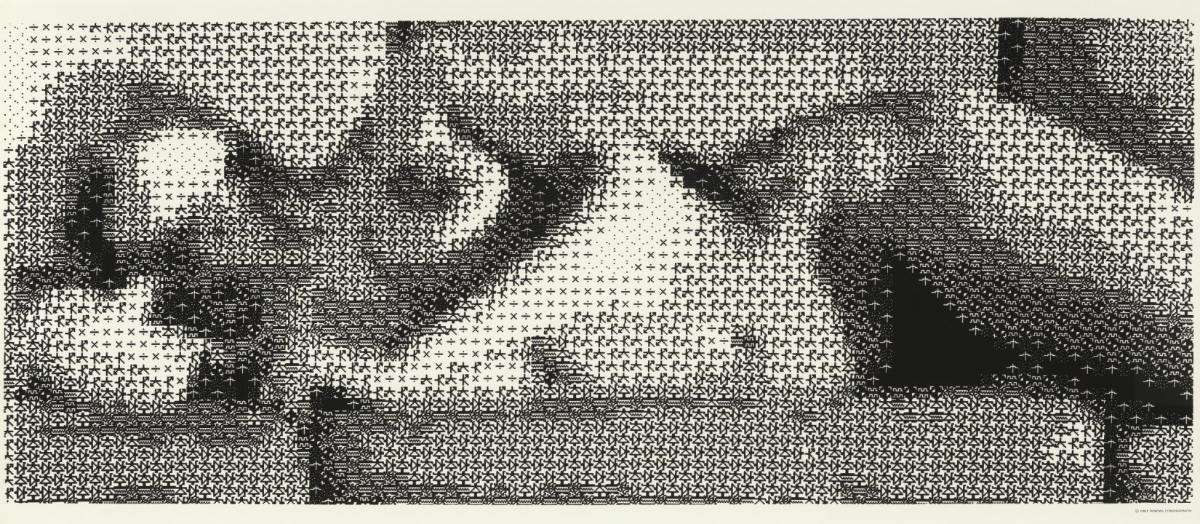
- 1967 - At the University of Kansas, artist Colette Stuebe and mathematician Charles Jeffries Bangert produce a series of algorithmic drawings created with a pen plotter.
- 1967 - Vera Molnár begins experimenting in Paris, in her husband's laboratory (who will develop the Centre Saint Charles, now the Department of Visual Arts at Paris 1 University) his early work on computers.
- 1968 - Sol Lewitt initiates his series Wall Drawings based on the interpretation of a series of
geometric rules.
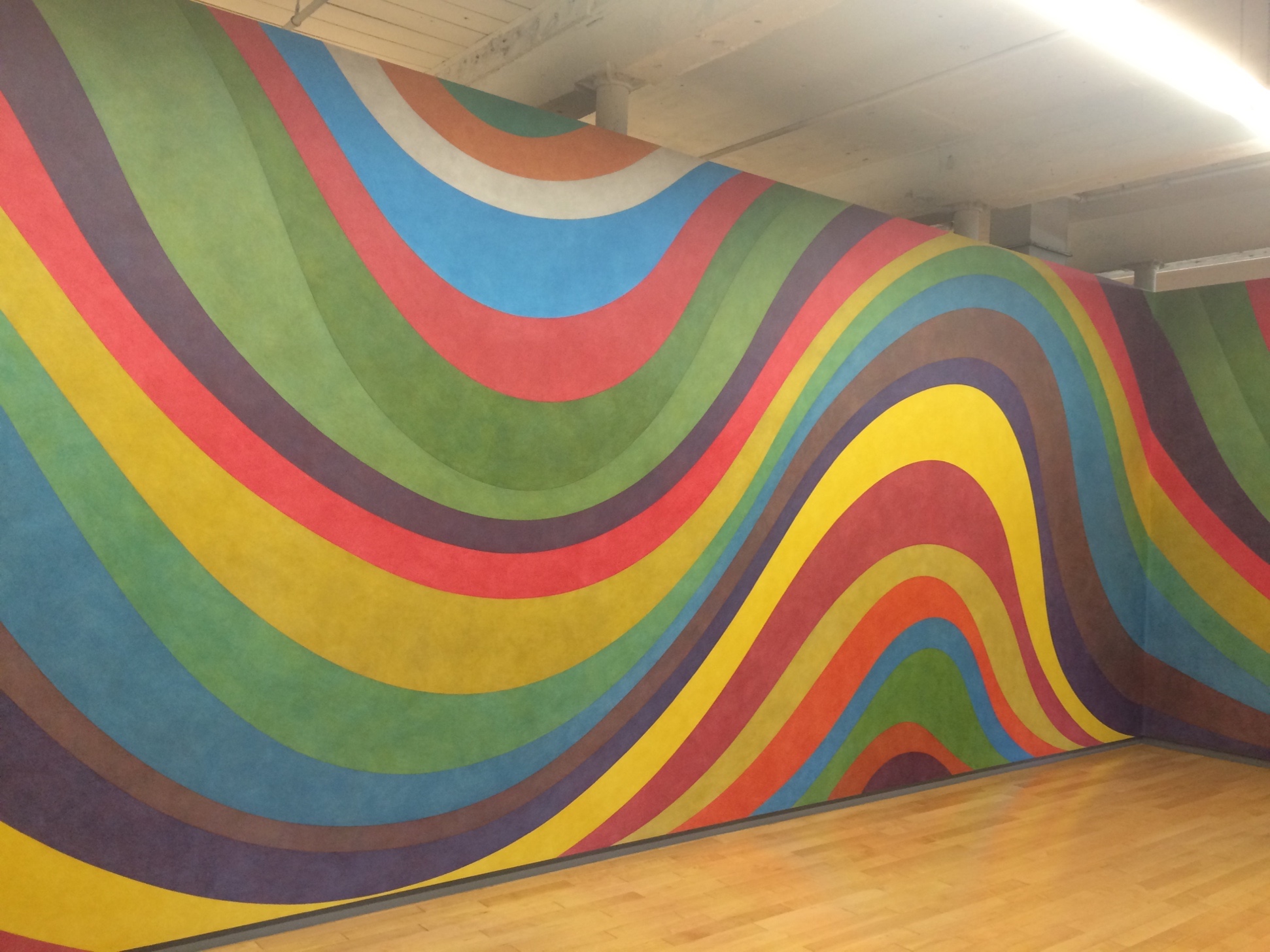
- 1968 - Exhibition Cybernetic Serendipity in London.
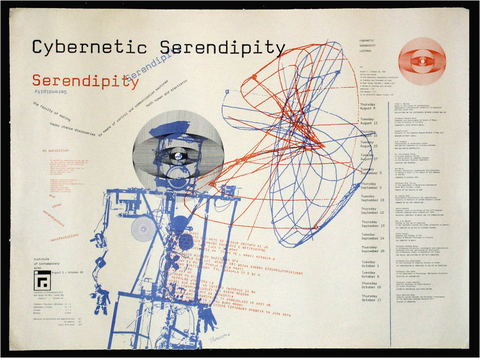
- 1968 - The MoMA organizes the exhibition The Machine as Seen at the End of the Mechanical Age commissioned by Pontus Hulten. 90 artists including Lillian Schwartz.
- 1968 - Charles Csuri, Sine Curve Man.
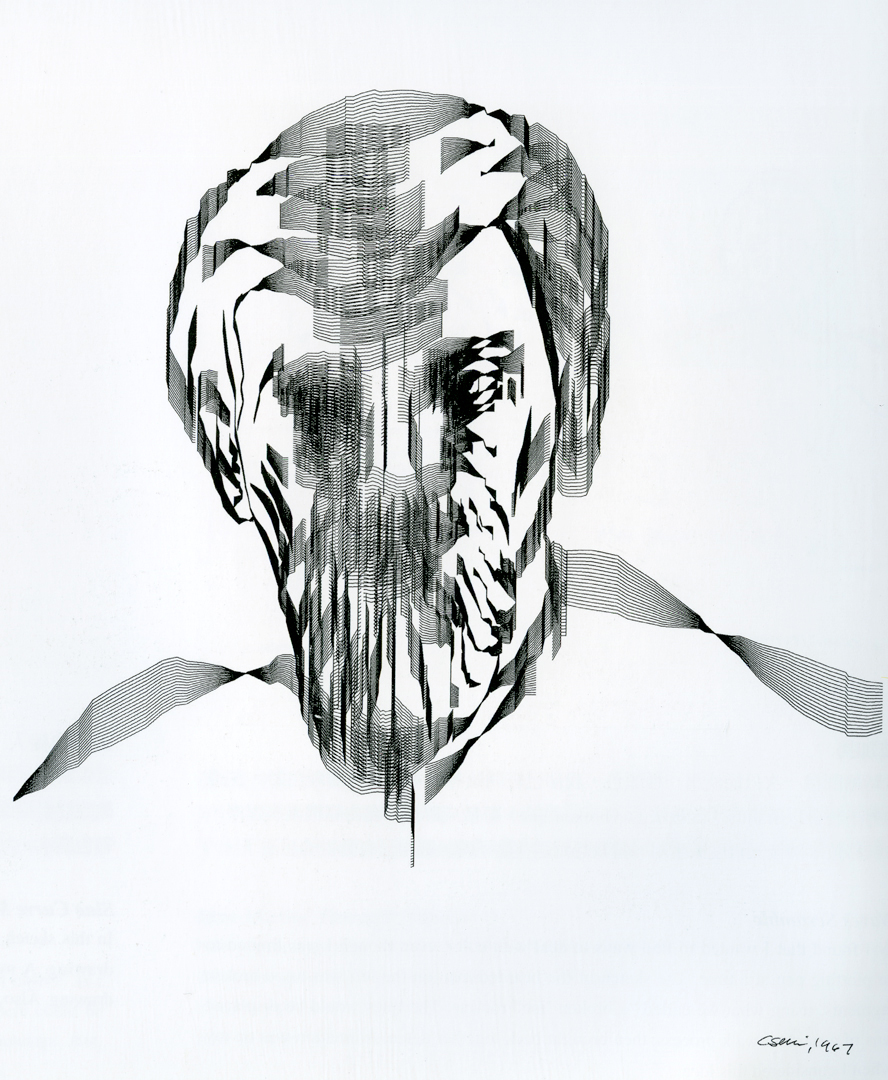
- 1969 - Donald E. Knuth publishes The Art of Computer Programming.
- 1969 - Miriam Schapiro begins using computers for her painting series. Here Normal
Heights (1969) and Canyon (1967).
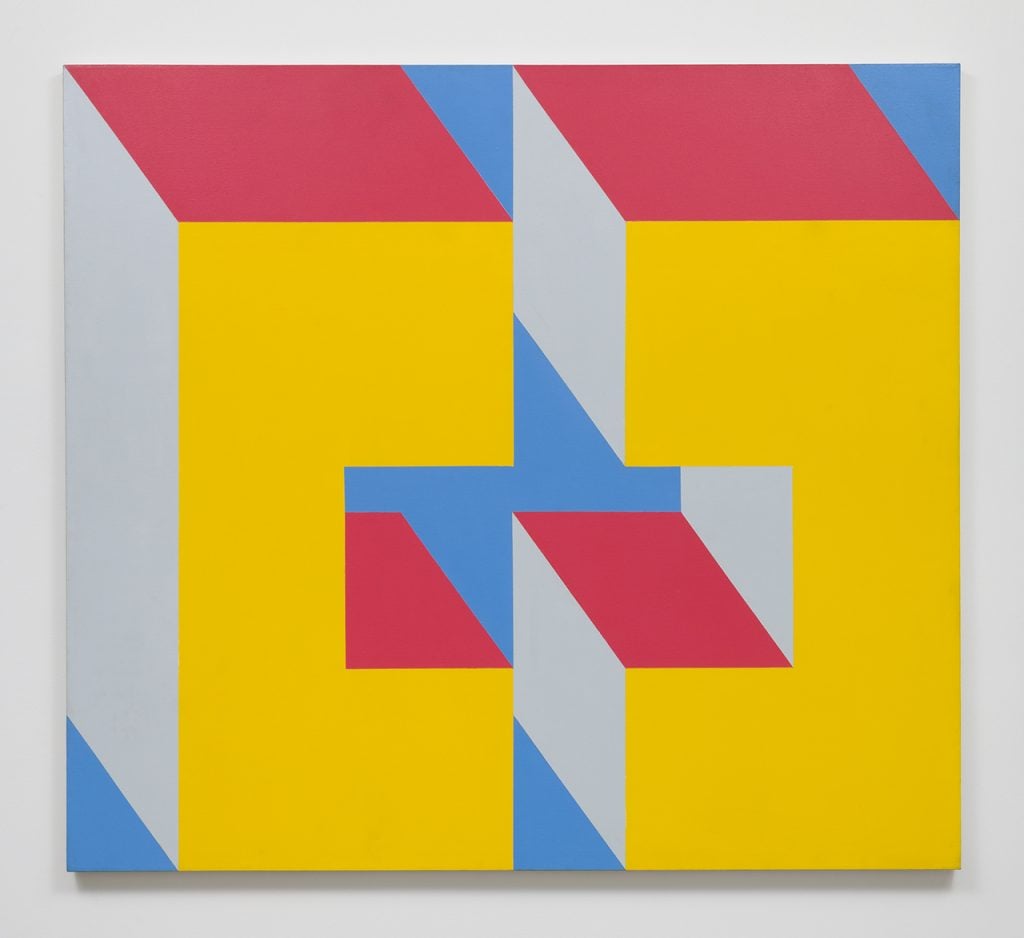
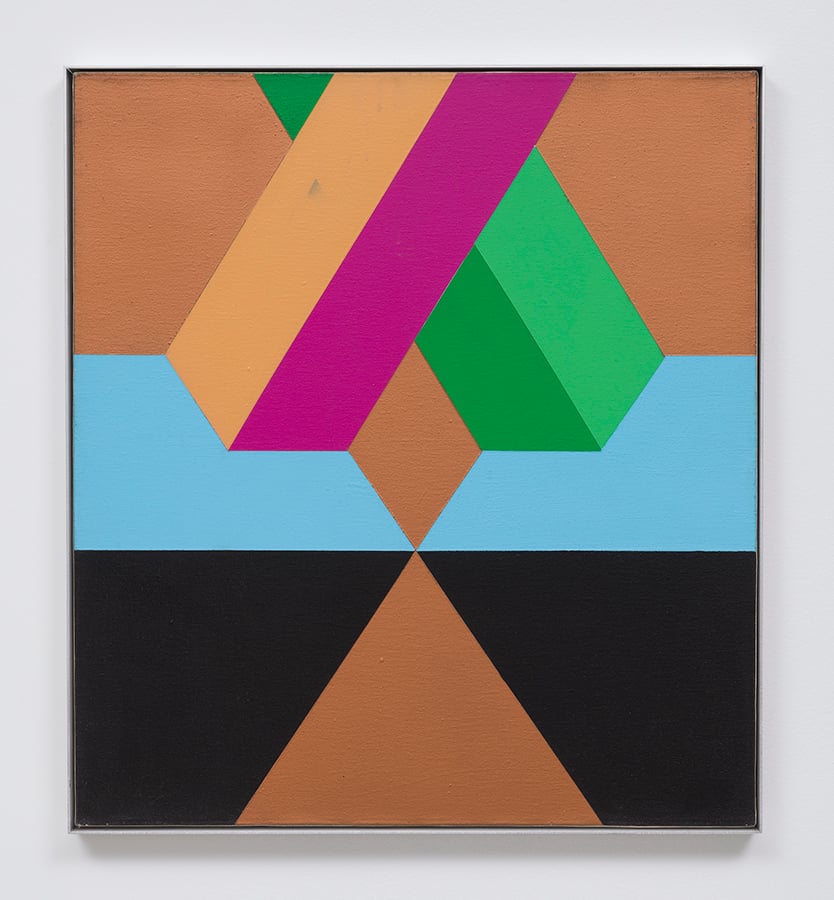
- 1969 - Launch of the ARPANET project by the U.S. military (initiated two years earlier).
- 1970 - Herbert Franke, Frieder Nake and Georg Nees launch the Computer Technique Group at the Venice Biennale at the same time as many exhibitions on these themes and media. In Sao Paulo opens the exhibition Computer Plotter Art: Primera Mostra na America Latina.
- 1970 - First issue of the magazine Radical Software.
- 1970 - Sonia Sheridan launches a pioneering course in generative art at the School of the Art Institute of Chicago.
- 1970 - Lillian Schwartz, Pixillation.
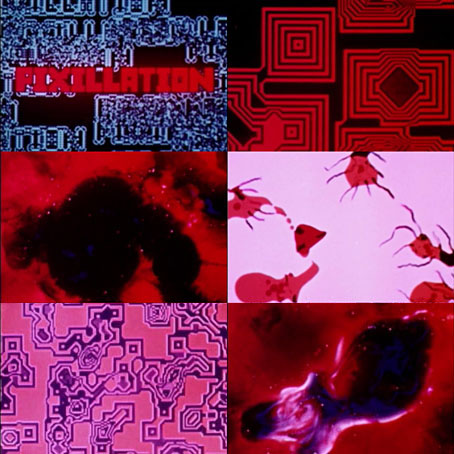
- 1970 - Channa Horwitz, Time Structure composition III Sonakinatography I.
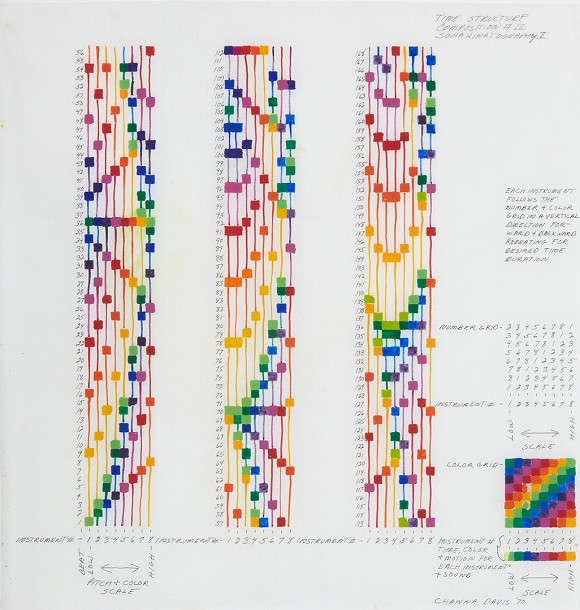
- 1970-1971 - Hanne Darboven, Ein Jahrhundert-ABC.
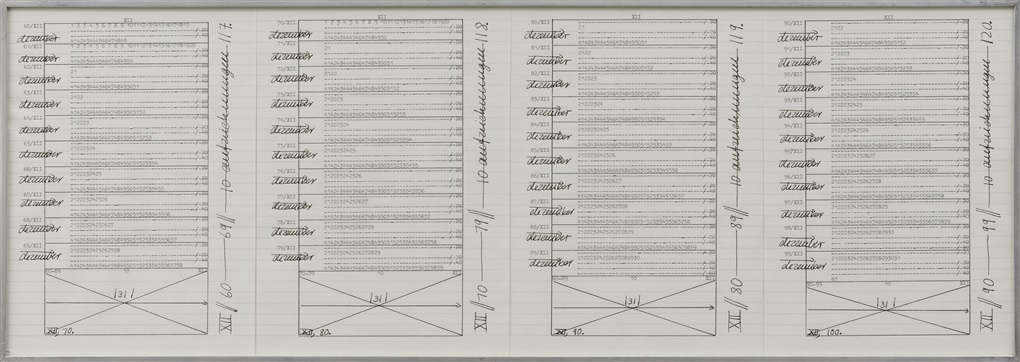
- 1971 - Monique Nahas and Hervé Huitric, Untitled
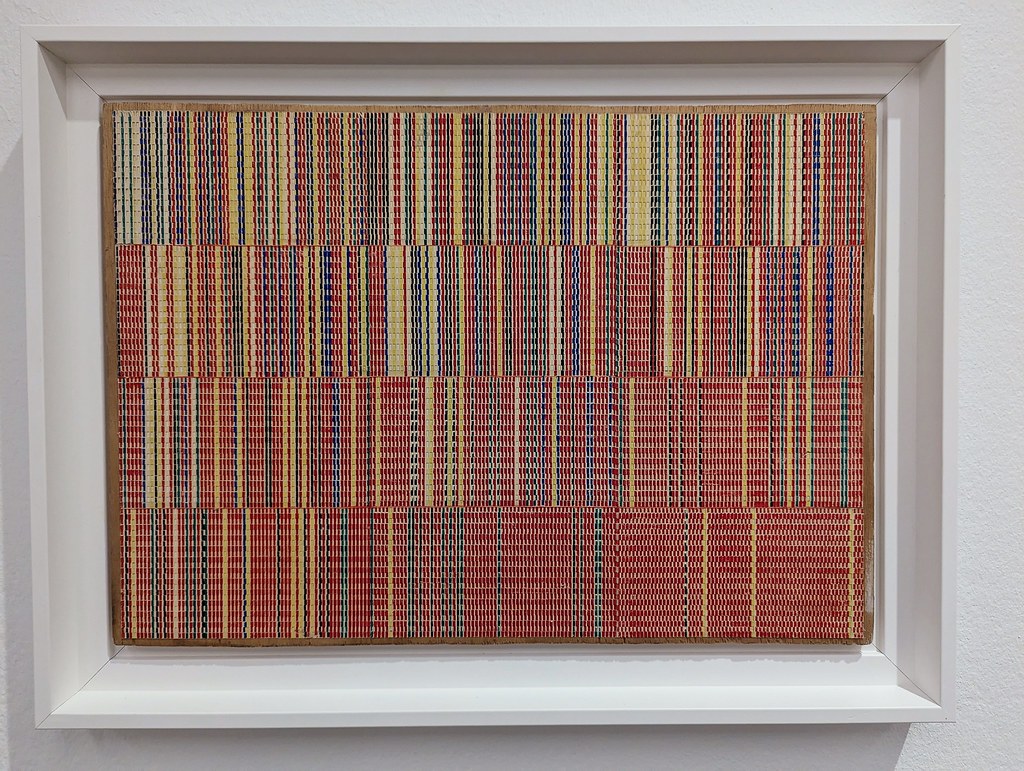
- 1972 - Grace C. Hertlein, Automated Forest.
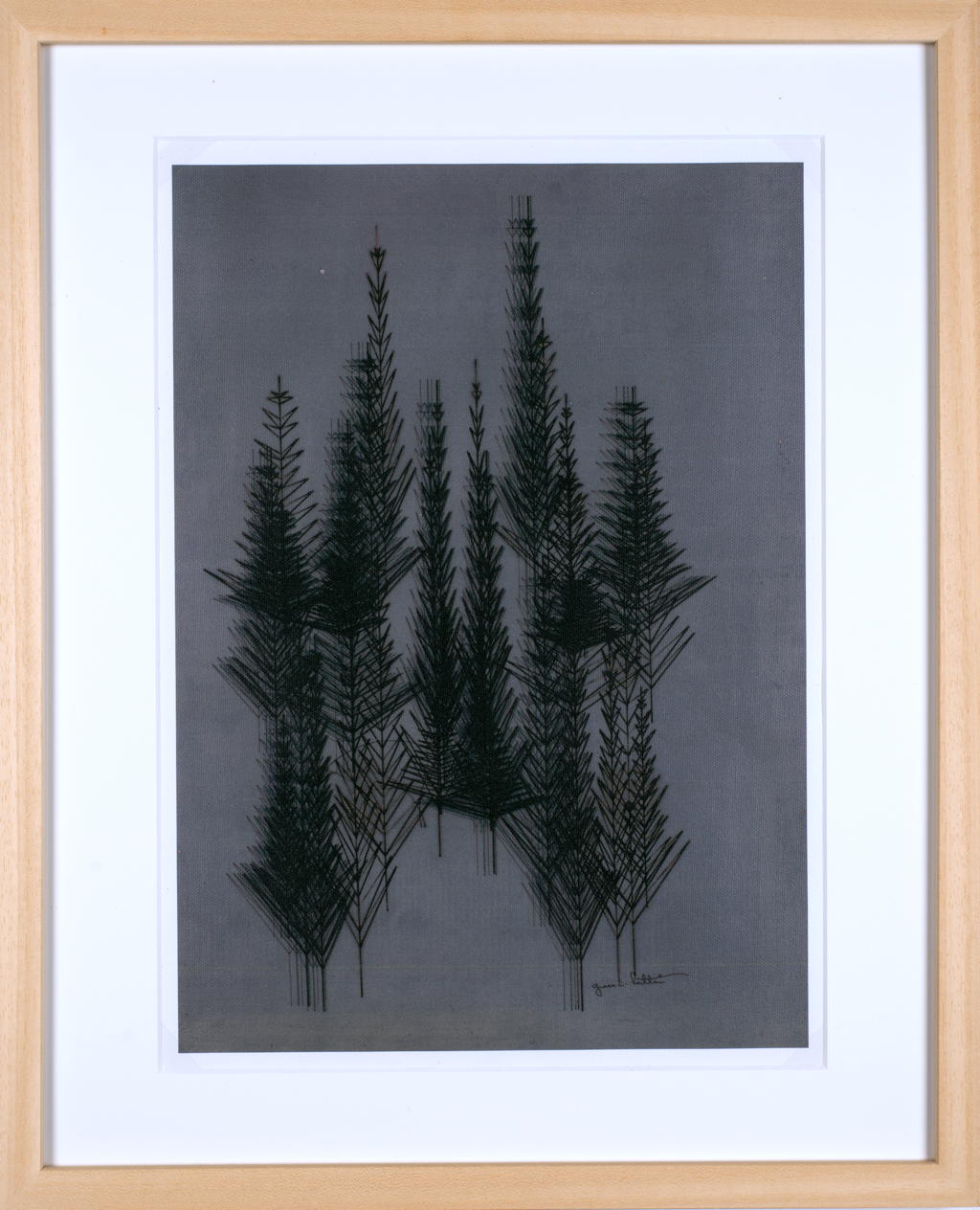
- 1972 - Public launch of the ARPANET project by the U.S. military.
- 1972 - Following research on ARPANET, an initial connected network project develops in San Francisco under the impetus of Pamela Hardt-English.
- 1973 - Manfred Mohr, Negative Field Syntax.
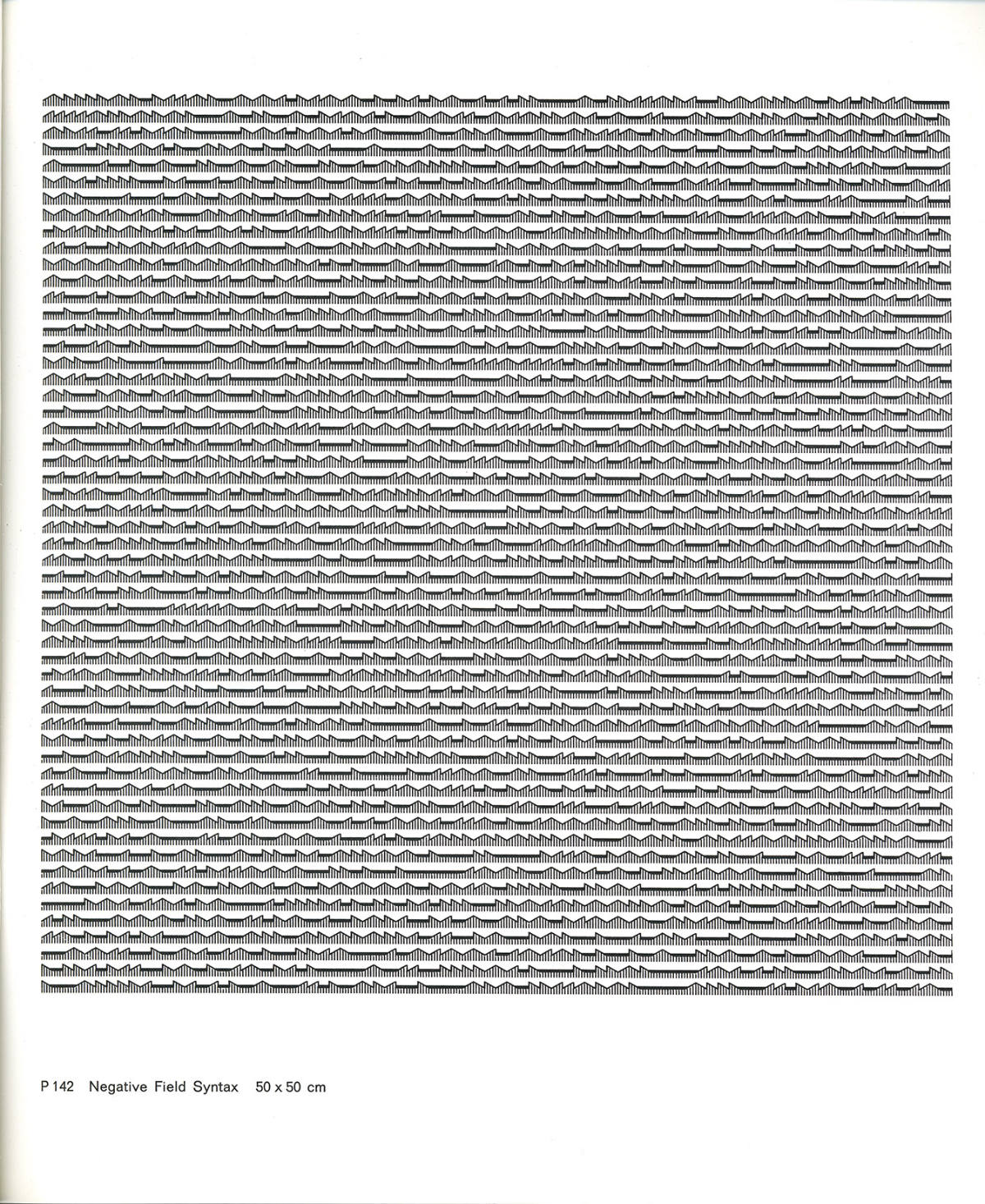
- 1973 - The International Computer Arts Festival is created in New York.
- 1973 - The Cardin space in Paris hosts the exhibition Ordinateur et création artistique of which Vera Molnár is a part.
- 1973 - The book Computer Poems is a first collection of generative poetry by computer.
- 1973 - Nina Sobell, BrainWave Drawings, created on an Apple 2 using equipment that allows
for the retrieval of brain signals.
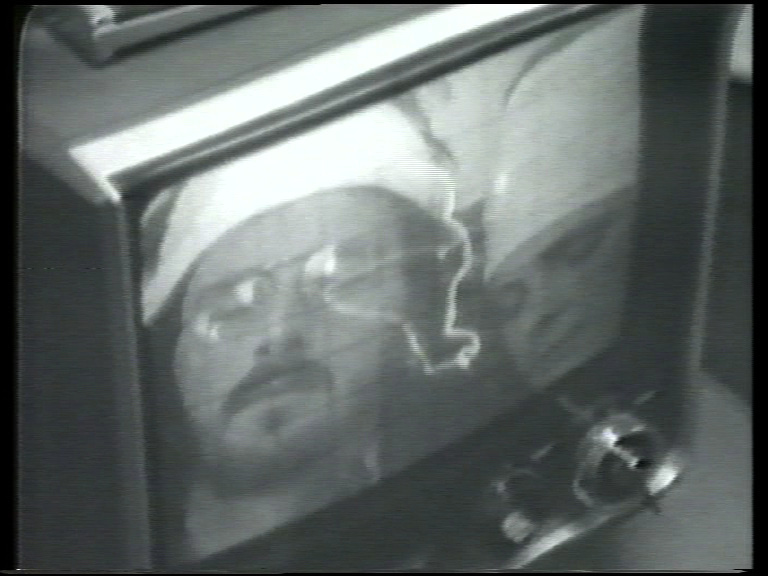
- 1974 - Vera Molnár, Hommage à Barbaud.
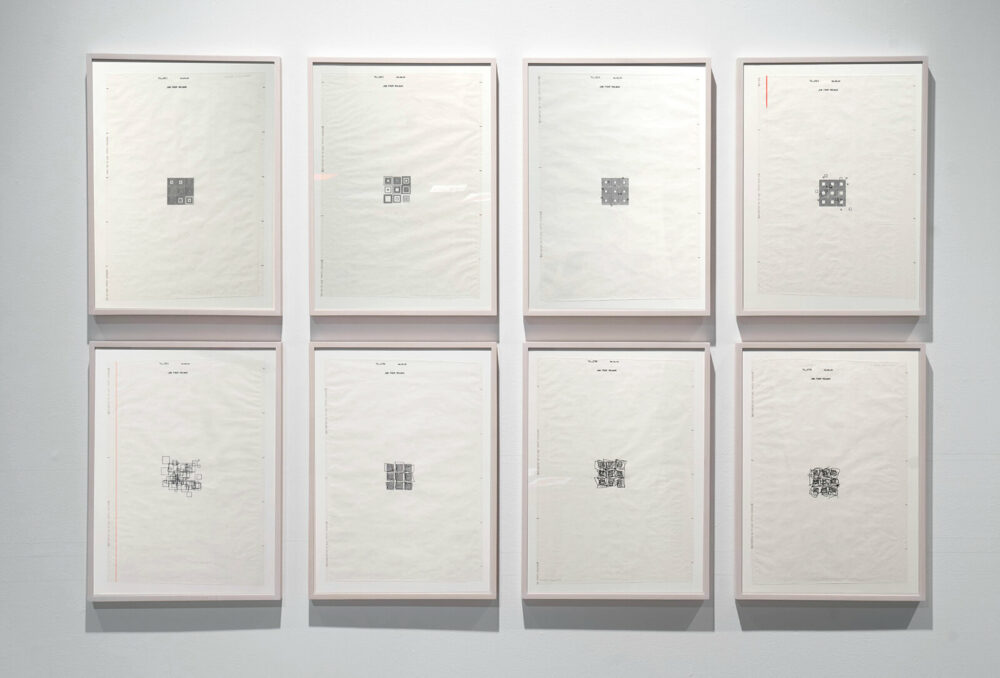
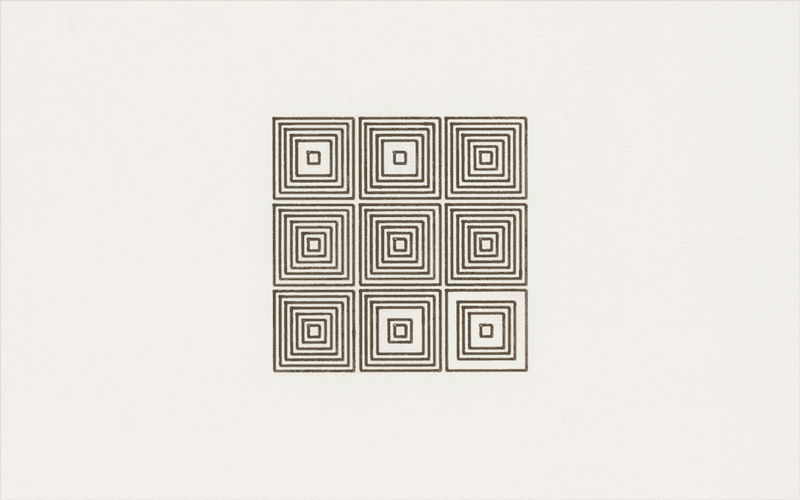
- 1974 - Vera Molnár, Mondrian.
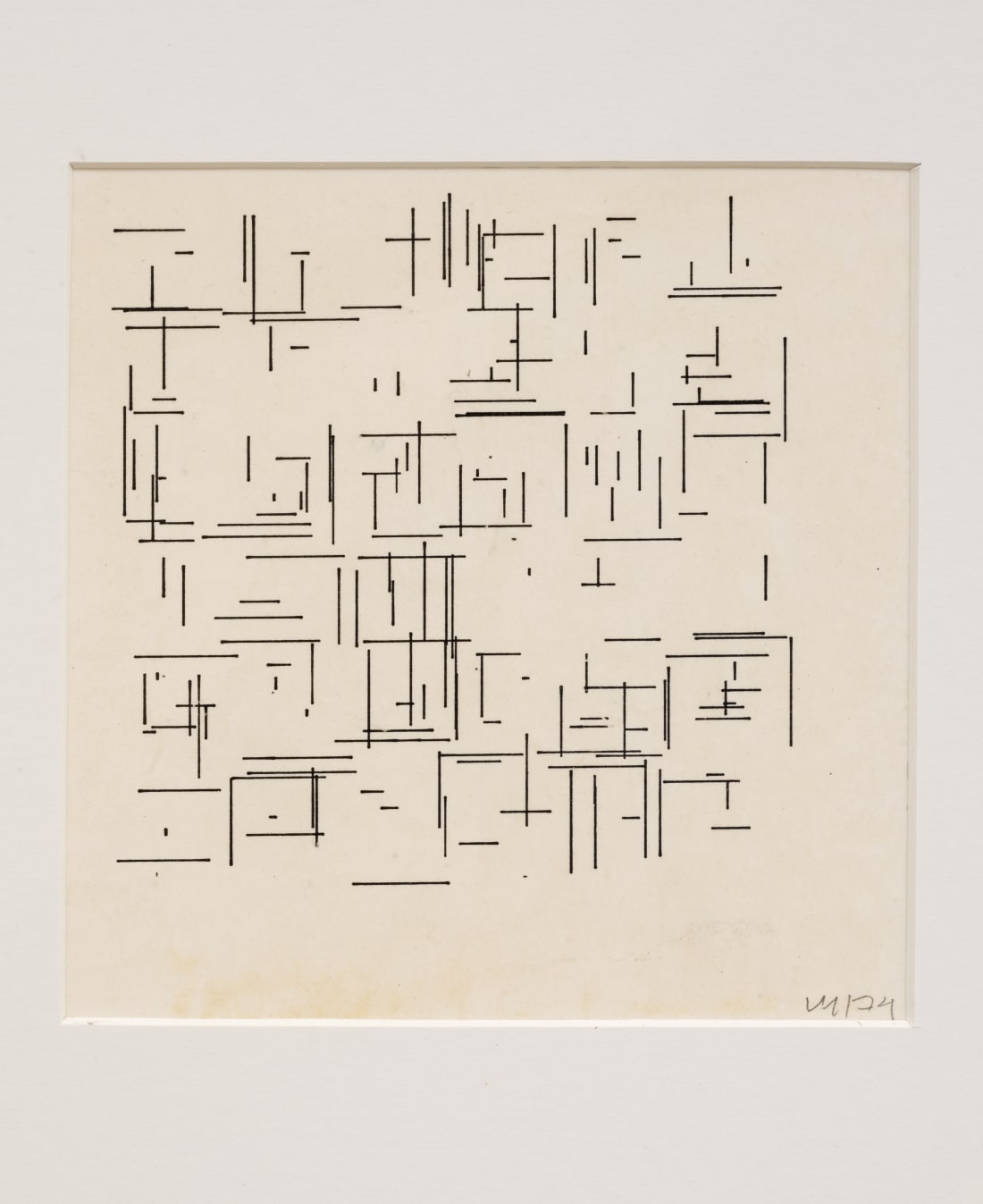
- 1974 - Creation of SIGGRAPH (Special Interest Group on Computer Graphics and Interactive Techniques) in Colorado.
- 1974 - Rebecca Allen, Girl Lifts Skirt.
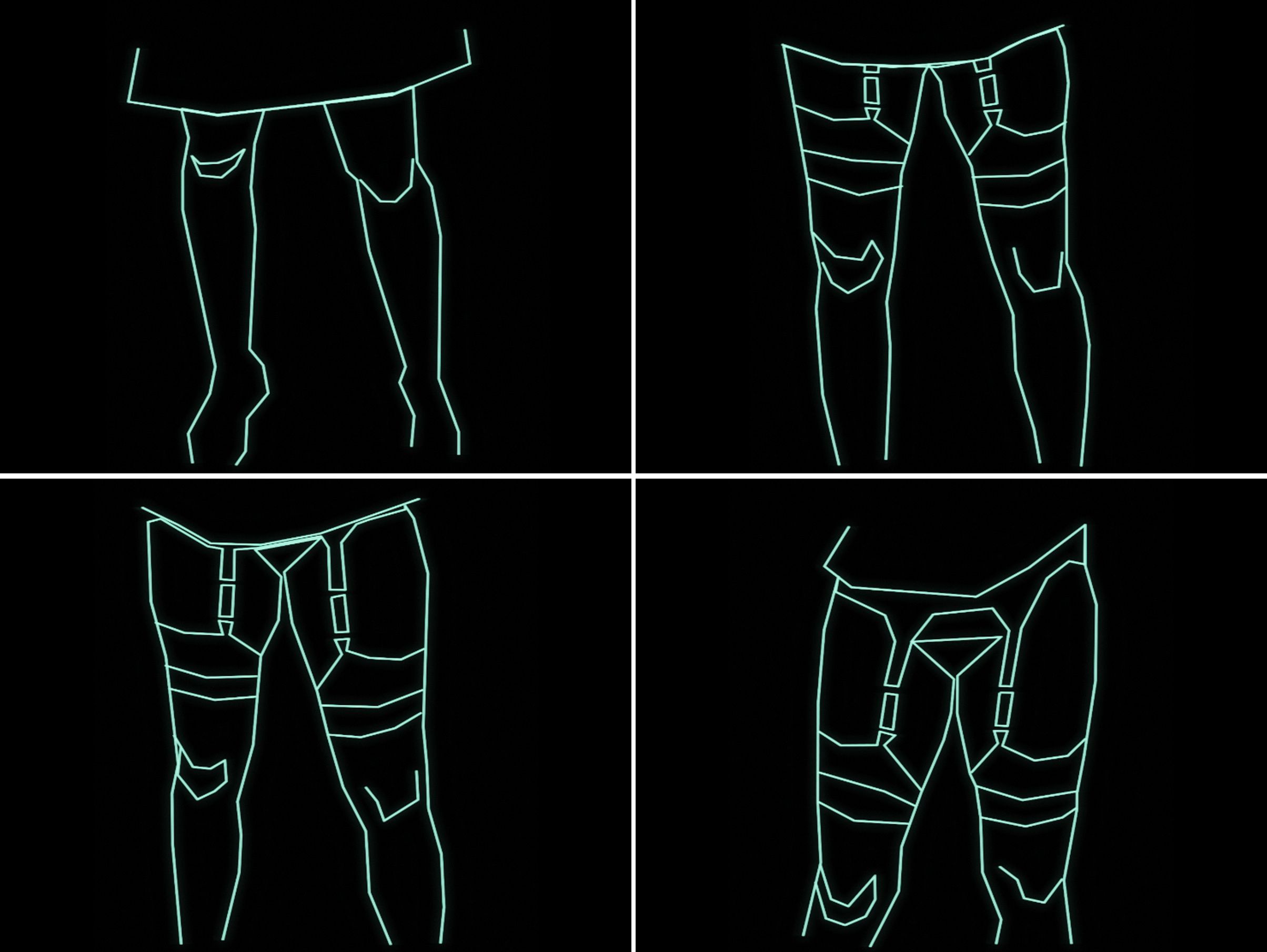
- 1975 - Alvy Ray Smith creates Paint.
- 1975 - François Morellet, Tavola 3.
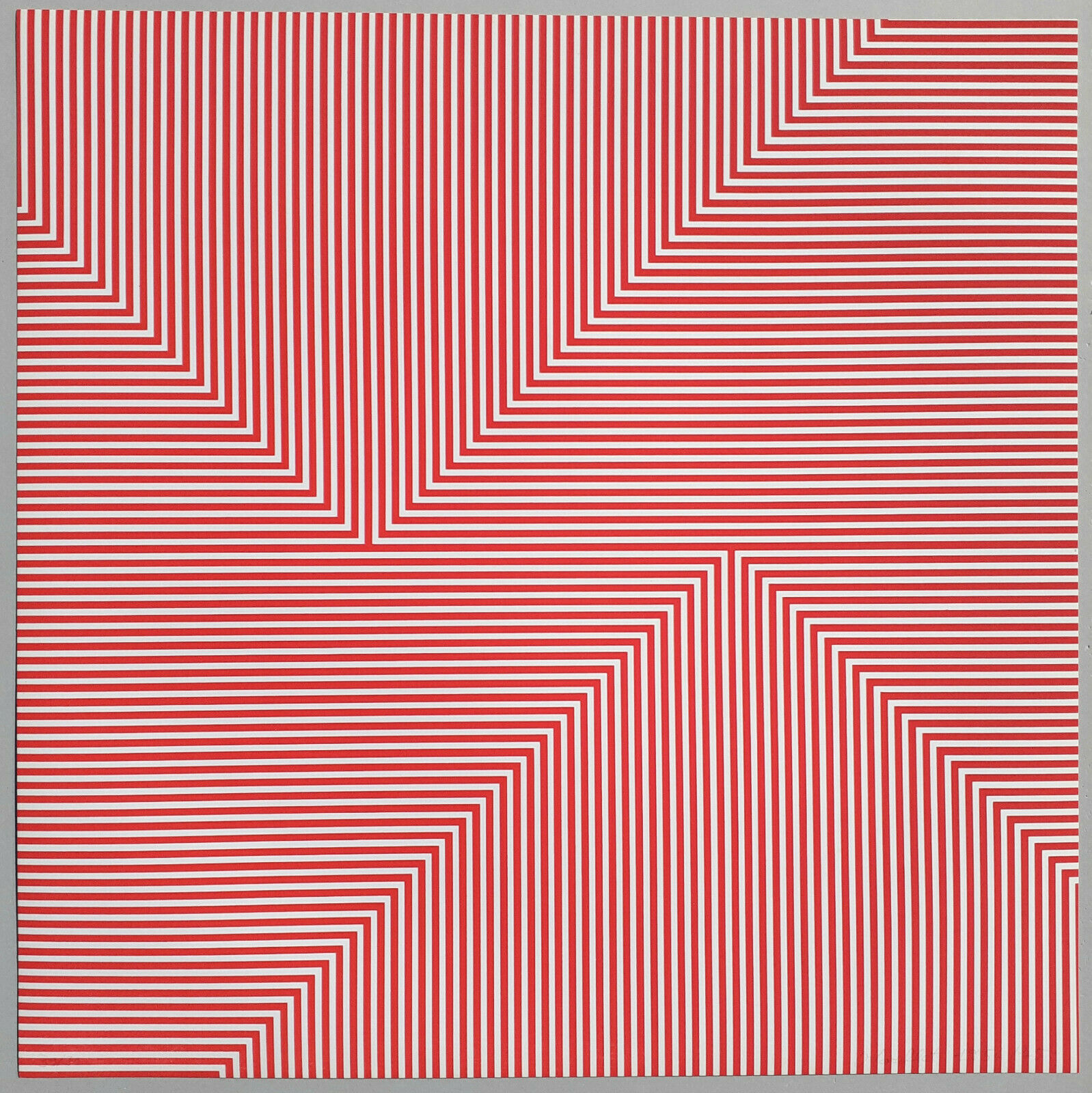
- 1976 - Vera Molnár, DesOrdres.
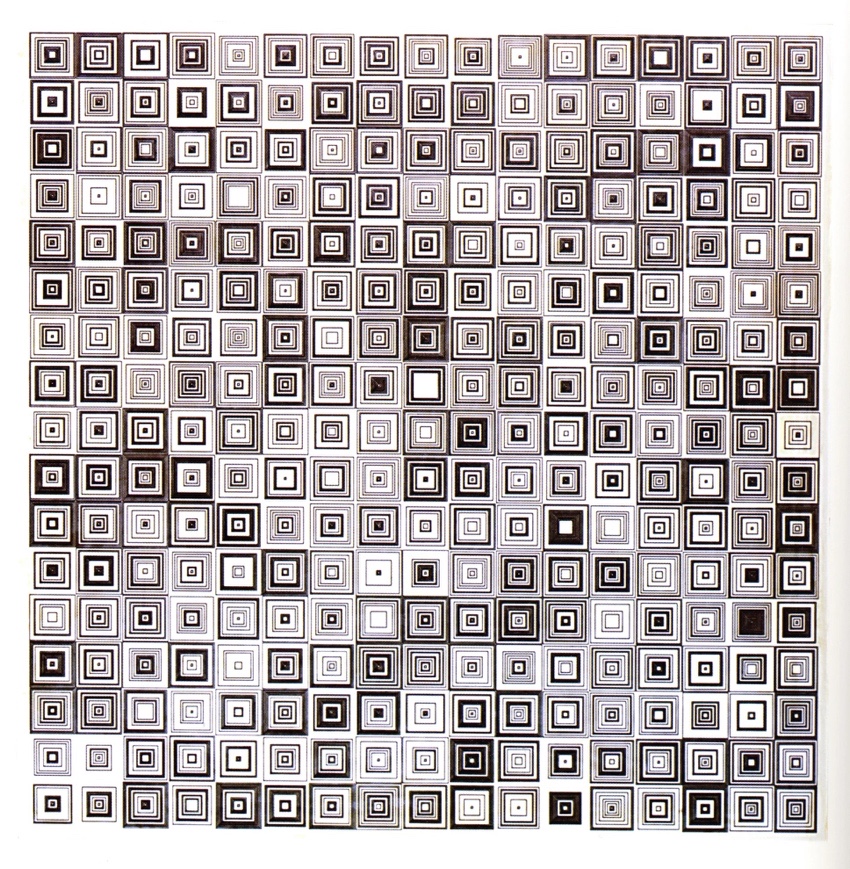
- 1977 - Arrival of the Apple 2, the first personal computer sold in large quantities.
- 1977 - Steina and Woody Vasulka start the series Waveform Studies.
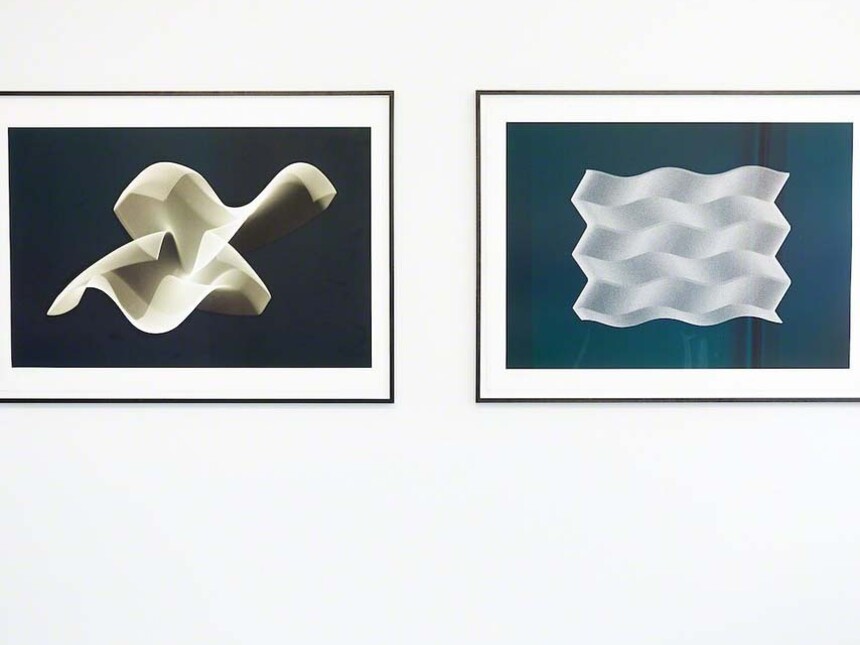
- 1977 - Ruth Leavitt, Plotter output of Topological 3D Mapping.
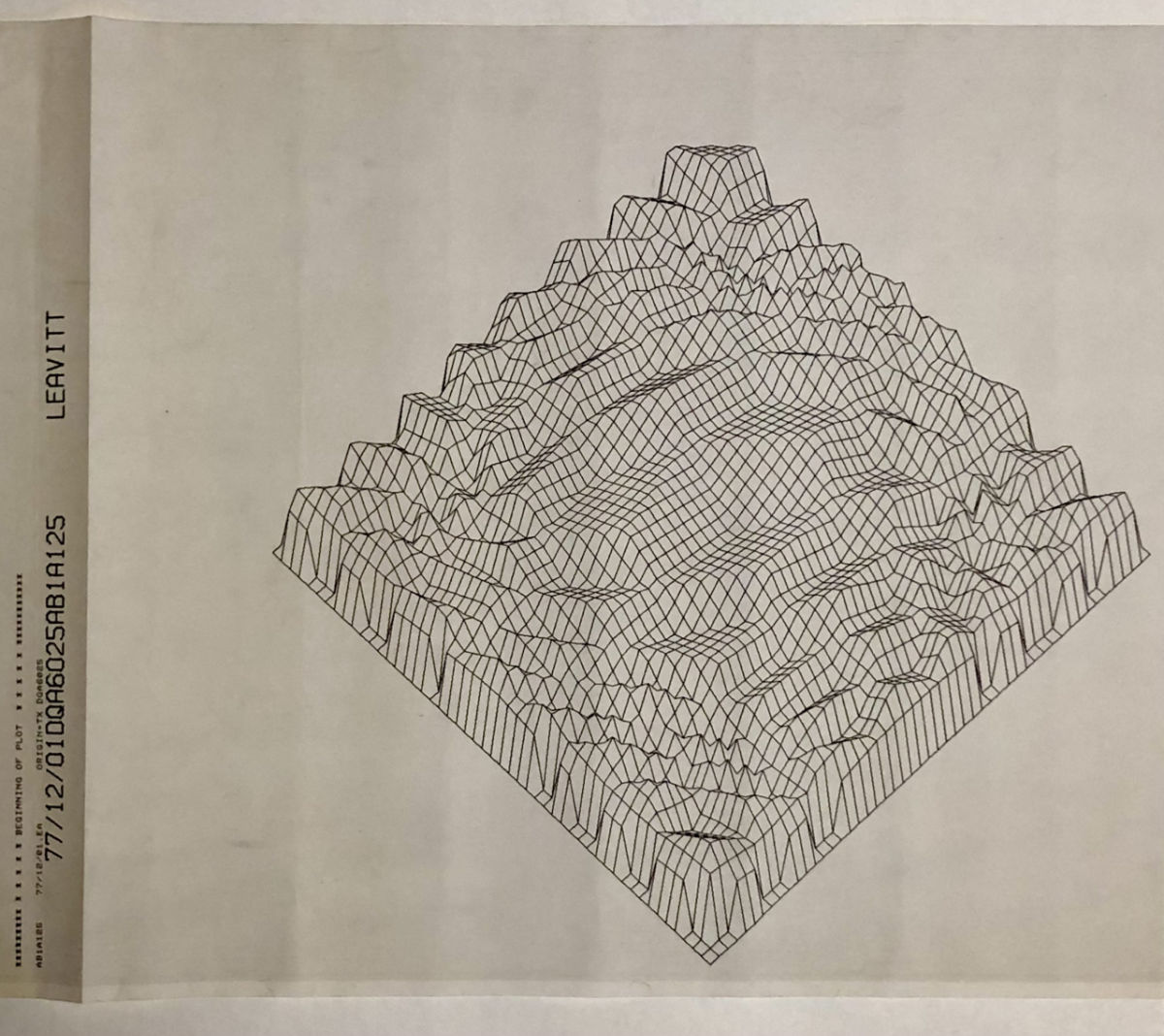
- 1977-2017 - Woody Vasulka, Hybrid hand Studies.
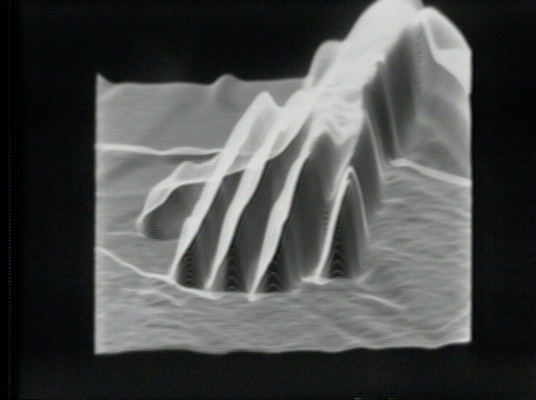
- 1978 - Bia Davou, Serial Structure.
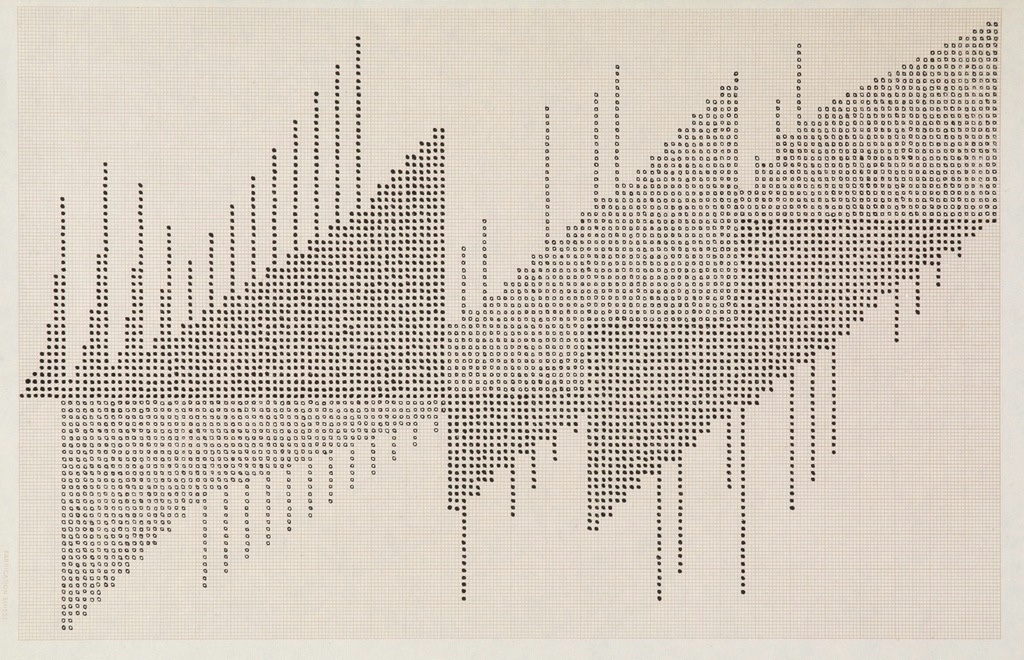
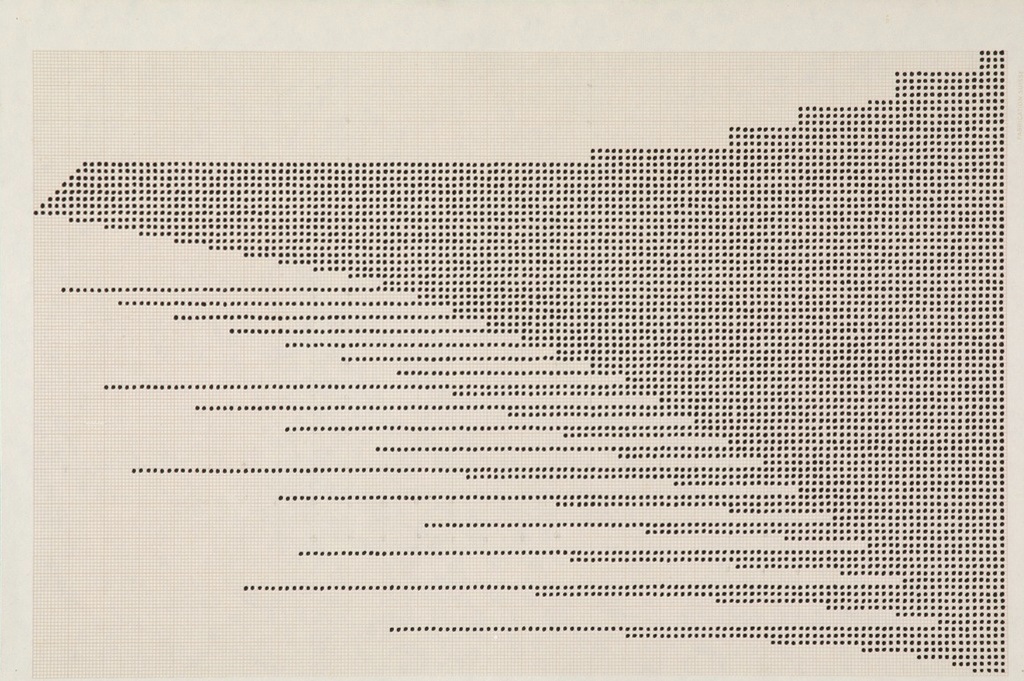
- 1978 - The Centre Pompidou hosts the exhibition Conception assistée par ordinateur.
- 1978 - US Experiment Seasat is a satellite research program led by Gladys West that will give rise to the invention of GPS (Global Positioning System) in the 1980s.
- 1979 - Creation of the Ars Electronica festival in Linz, Austria, a festival now recognized as one of the most important in the field of digital art.
- 1980 - Roberta Williams creates the video game Mystery House, the first video game to link text and
images.
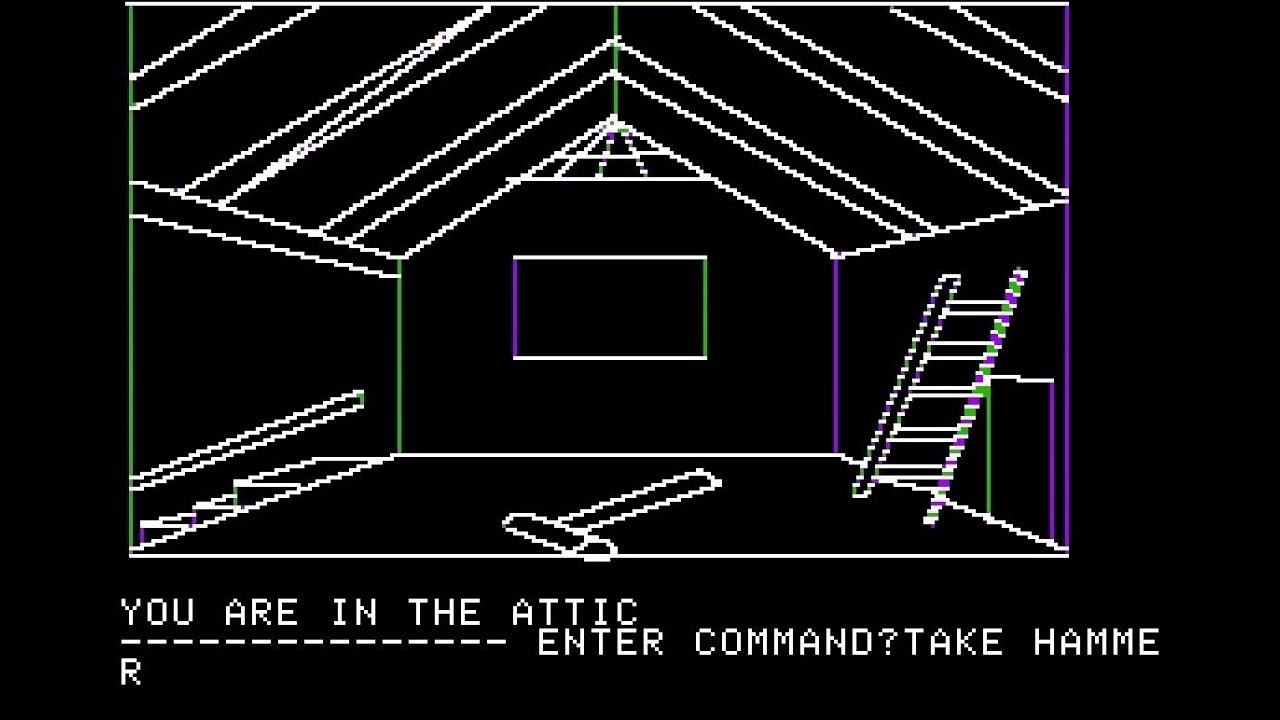
- 1980 - Zbigniew Rybczyński, Tango, watch the movie here.
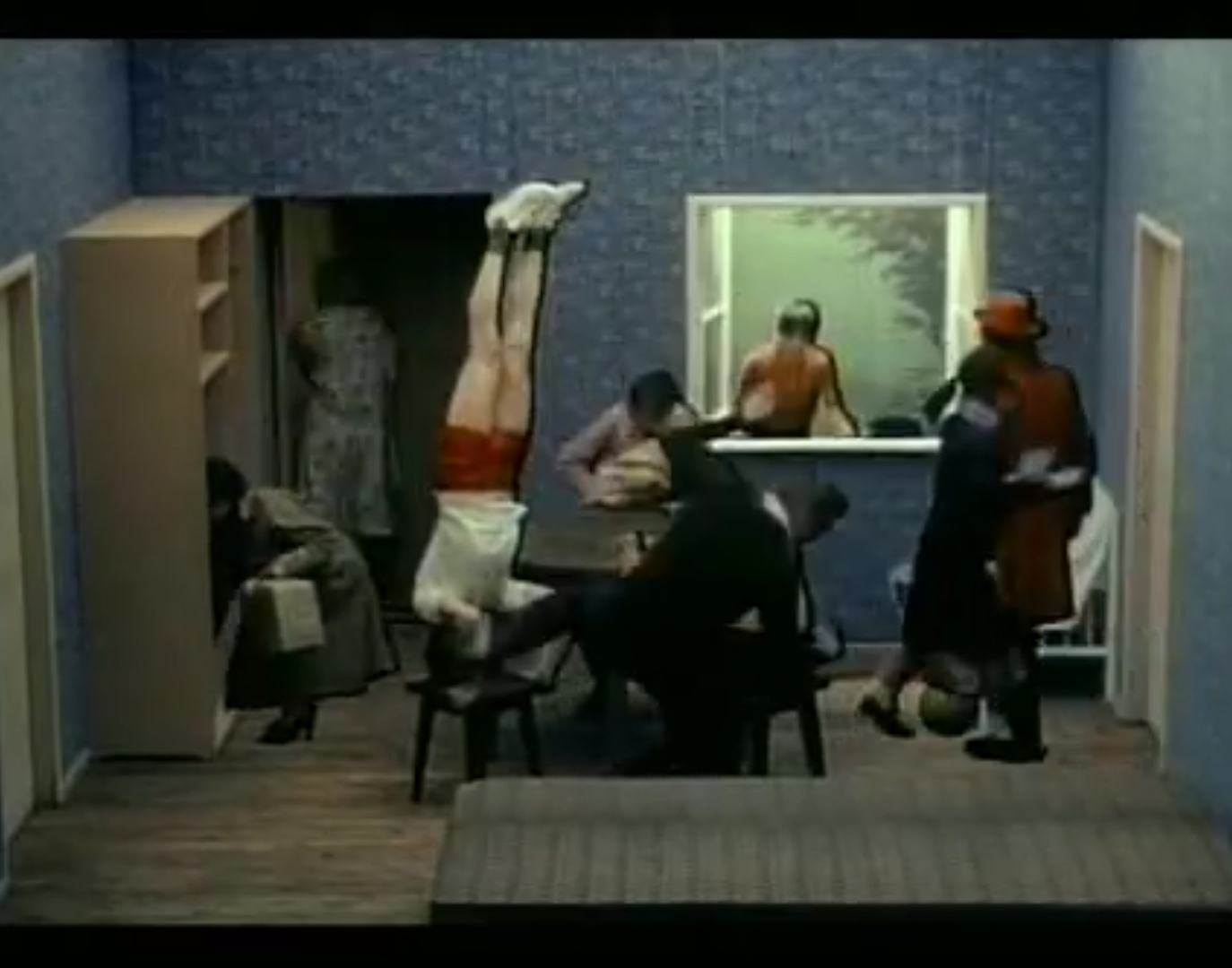
- 1981 - MS-DOS.
- 1981 - IBM releases the IBM PC.
- 1981 - Rebecca Allen Swimmer, one of the first 3D animations of a human body and the first
of a female body.
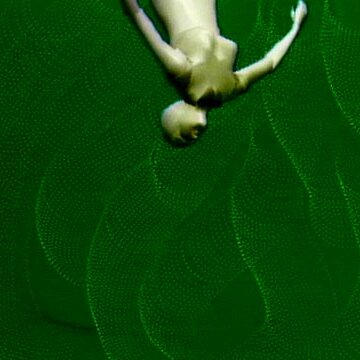
- 1982 - Sonya Rapoport, Shoe-Field (1982-1989).
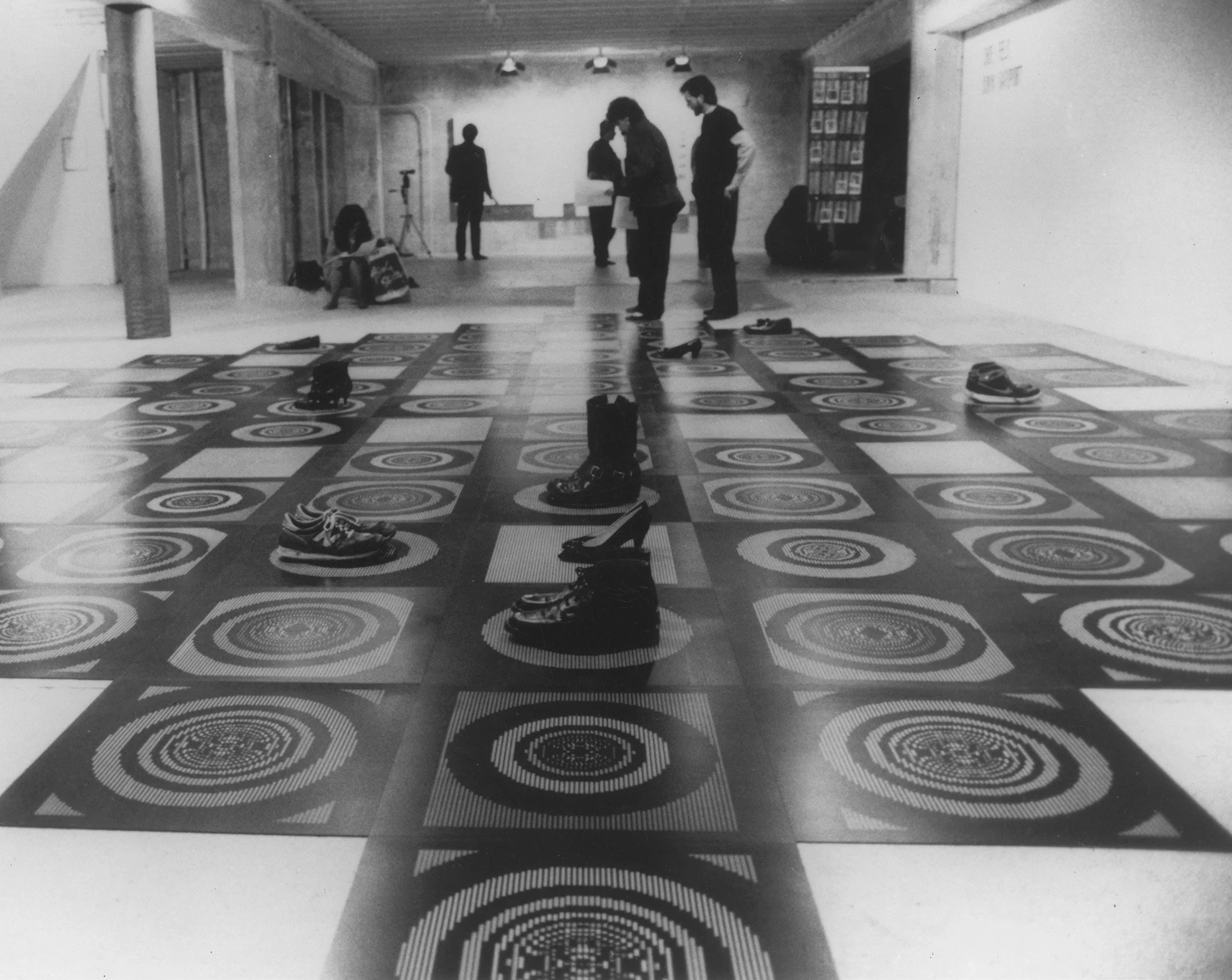
- 1982 - Rebecca Allen and Twyla Tharp, The Catherine Wheel.
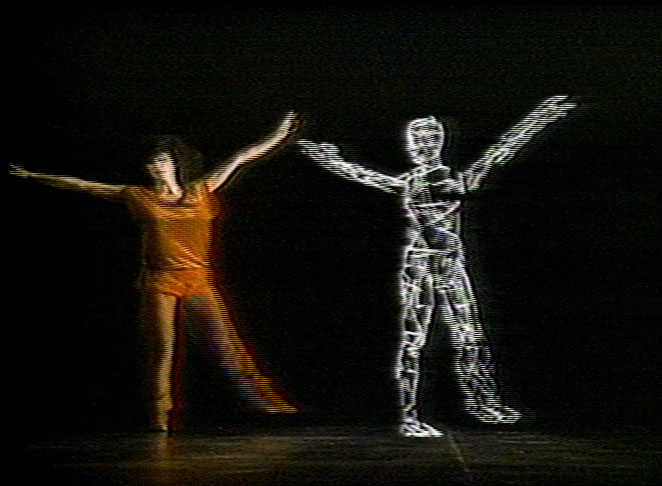
- 1982 - Susan Kare designs the icons for the Apple 1.
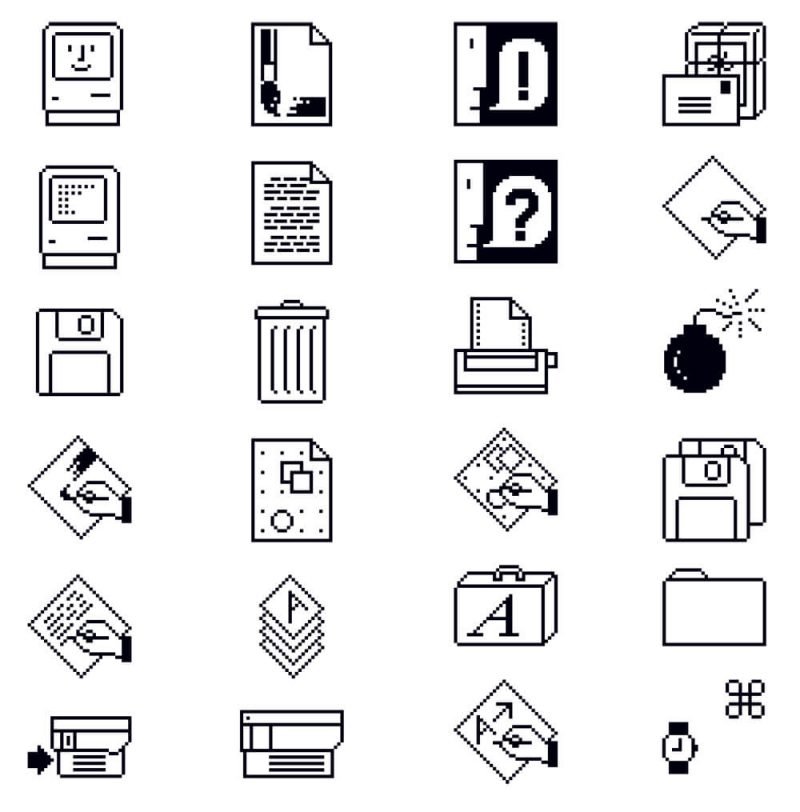
- 1983 - Frank Popper develops the exhibition Electra: l'électricité et l'électronique dans l'art du XXe siècle at the Musée d'art moderne de Paris.
- 1983 - Nelson Max, Carla's Island, video here.
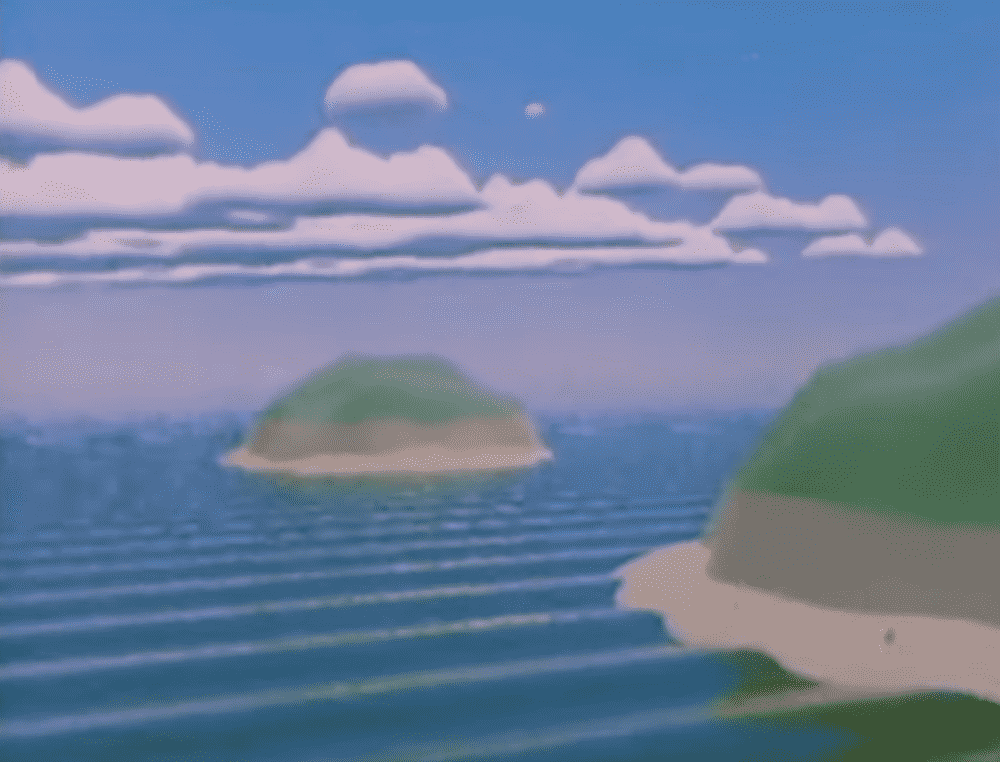
- 1983 - Yoichiro Kawaguchi, Mysterious Galaxy.
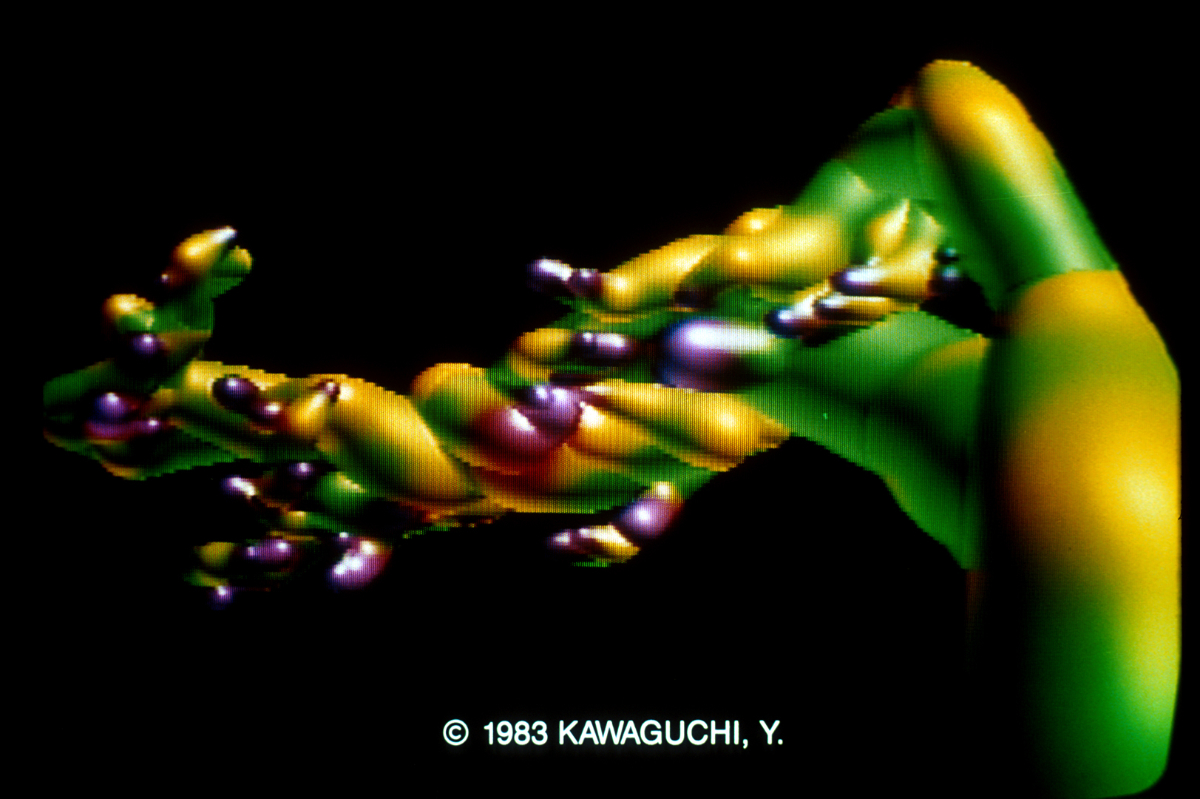
- 1984 - Release of the MacIntosh.
- 1984 - Lynn Hershman, Lorna, interactive film using laser disc.
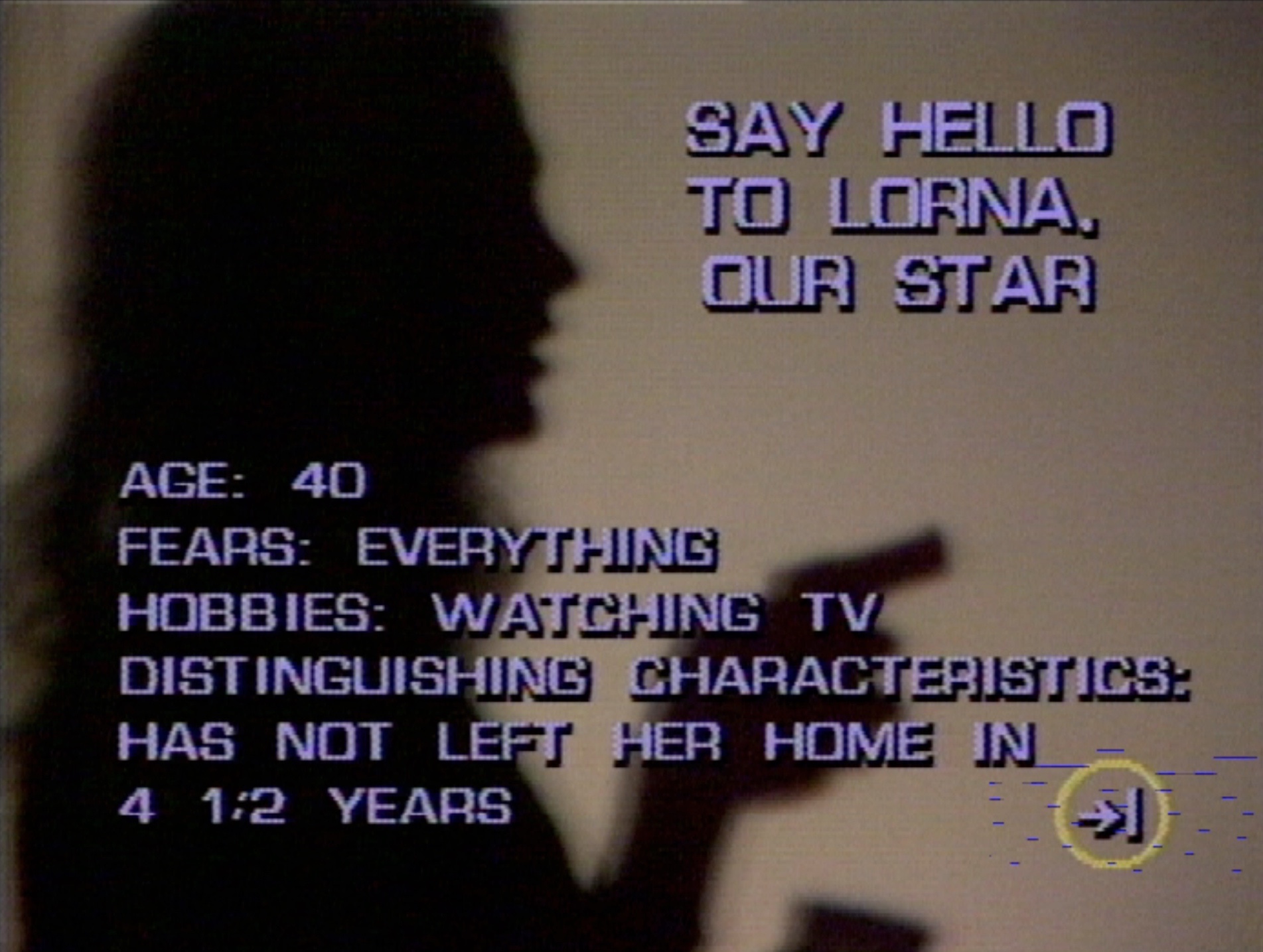
- 1985 - Creation of the ARM processor, now present in our smartphones.
- 1985 - Donna Haraway writes A Cyborg Manifesto, a foundational text of cyberfeminism. Read it here.
- 1988 - Samia Halaby, Fold 2.
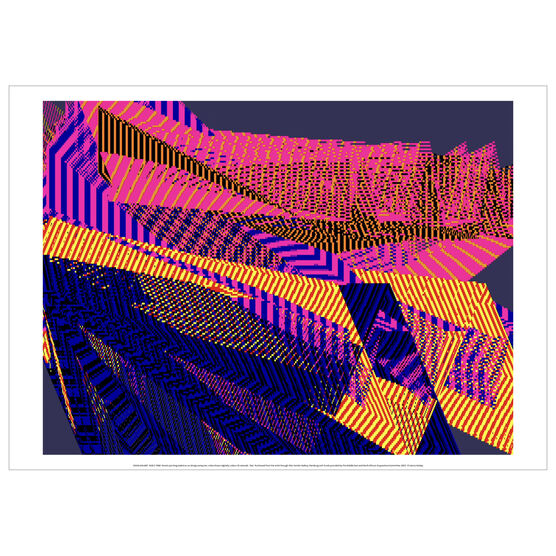
- 1989 - Myron Krueger, Videoplace, video here.
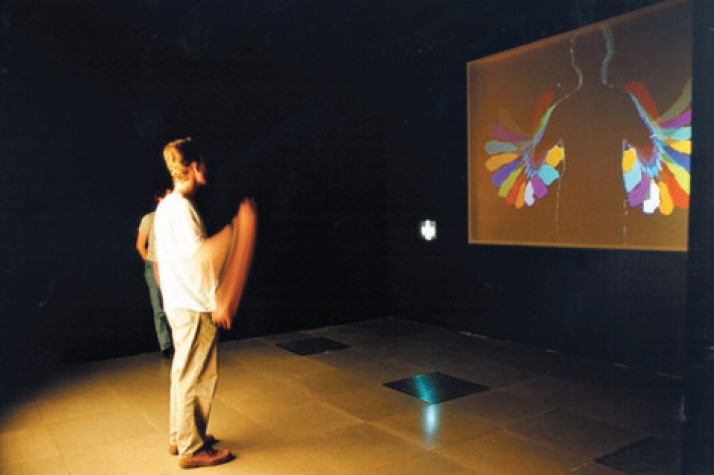
- 1989-1996 - Vera Molnár, Montagne Sainte Victoire.
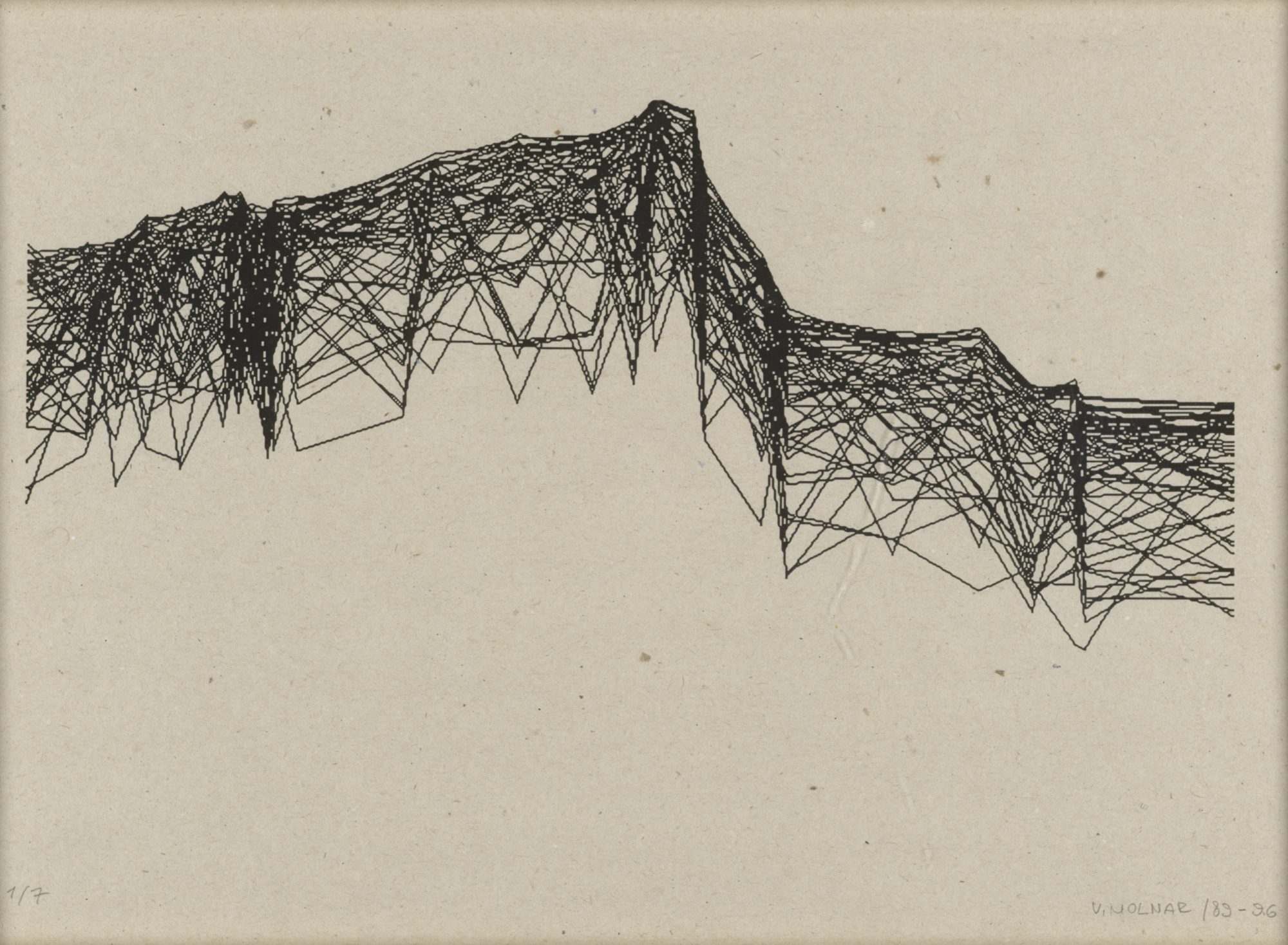
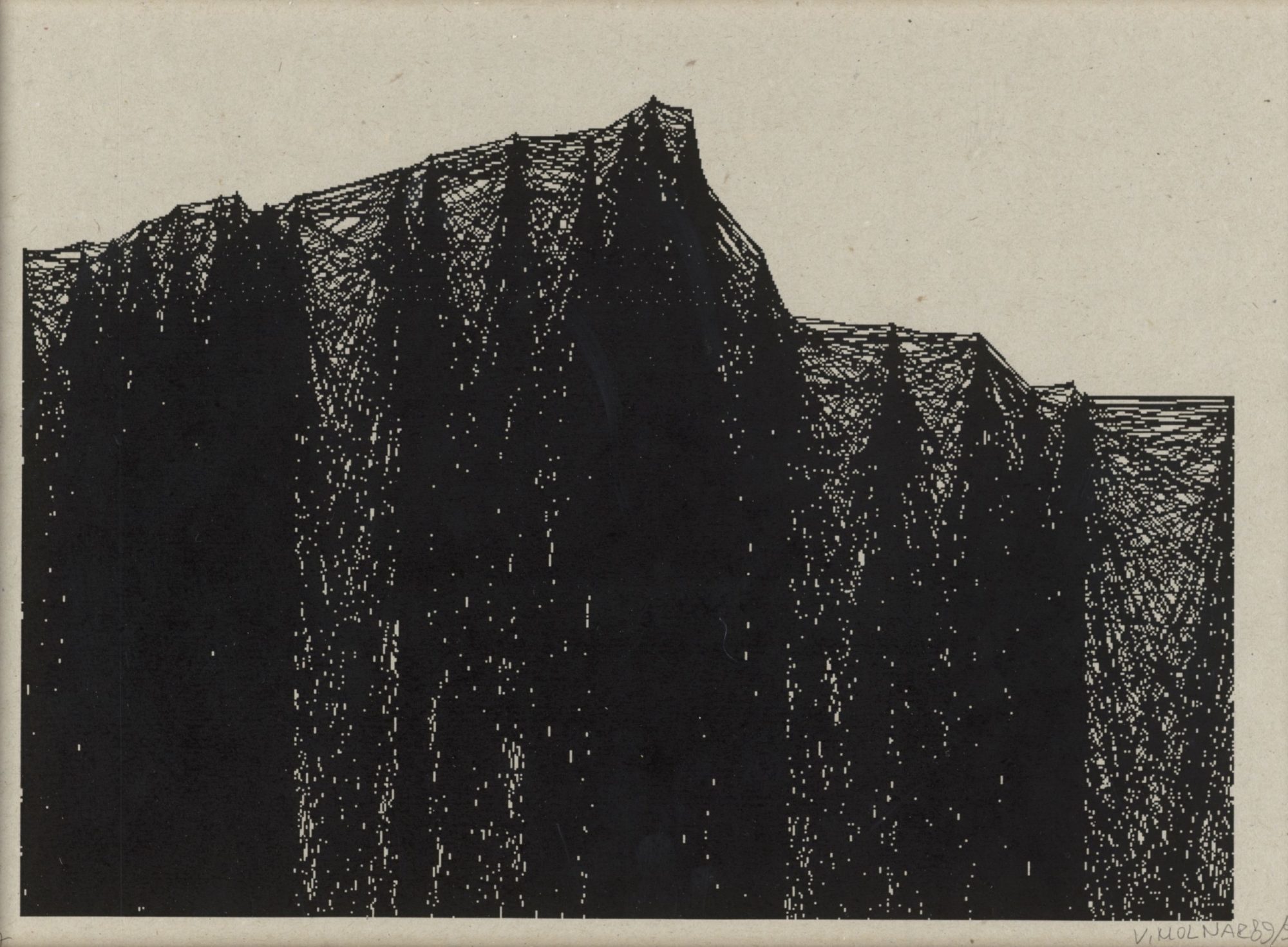
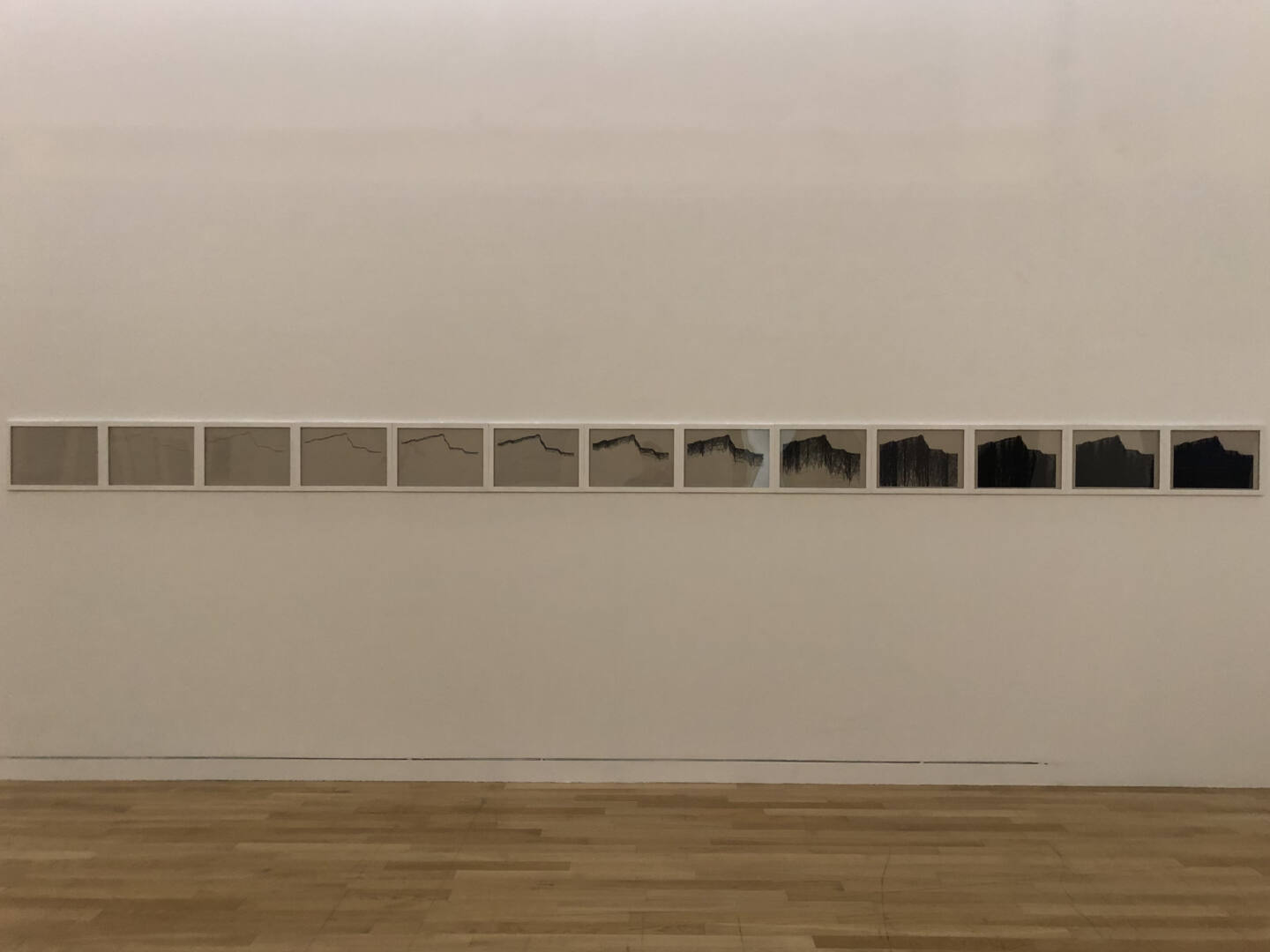
- 1989 - Tim Berners-Lee writes his article on the relationship between the internet and hypertext, which will lead to his research program at CERN to design the World Wide Web (WWW).
- 1990 - The image editing software Adobe Photoshop is launched.
- 1990 - Vera Molnár, Hommage à Dürer.
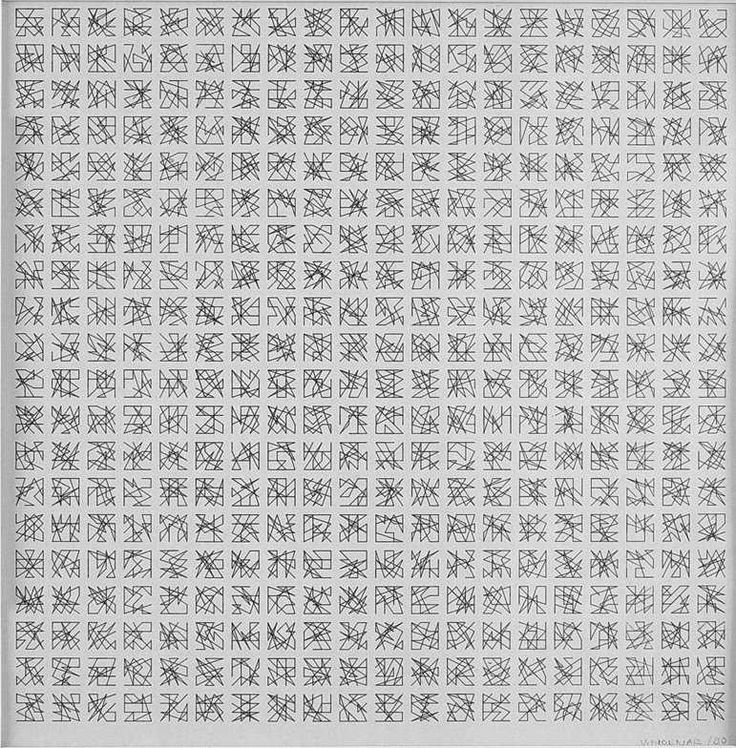
- 1991 - The collective VNS Matrix writes A Cyber Manifesto for the 21st Century.
- 1991 - Release of Linux and the World Wide Web (WWW) to the general public.
- 1991 - Betty Danon, How a shade had a show.
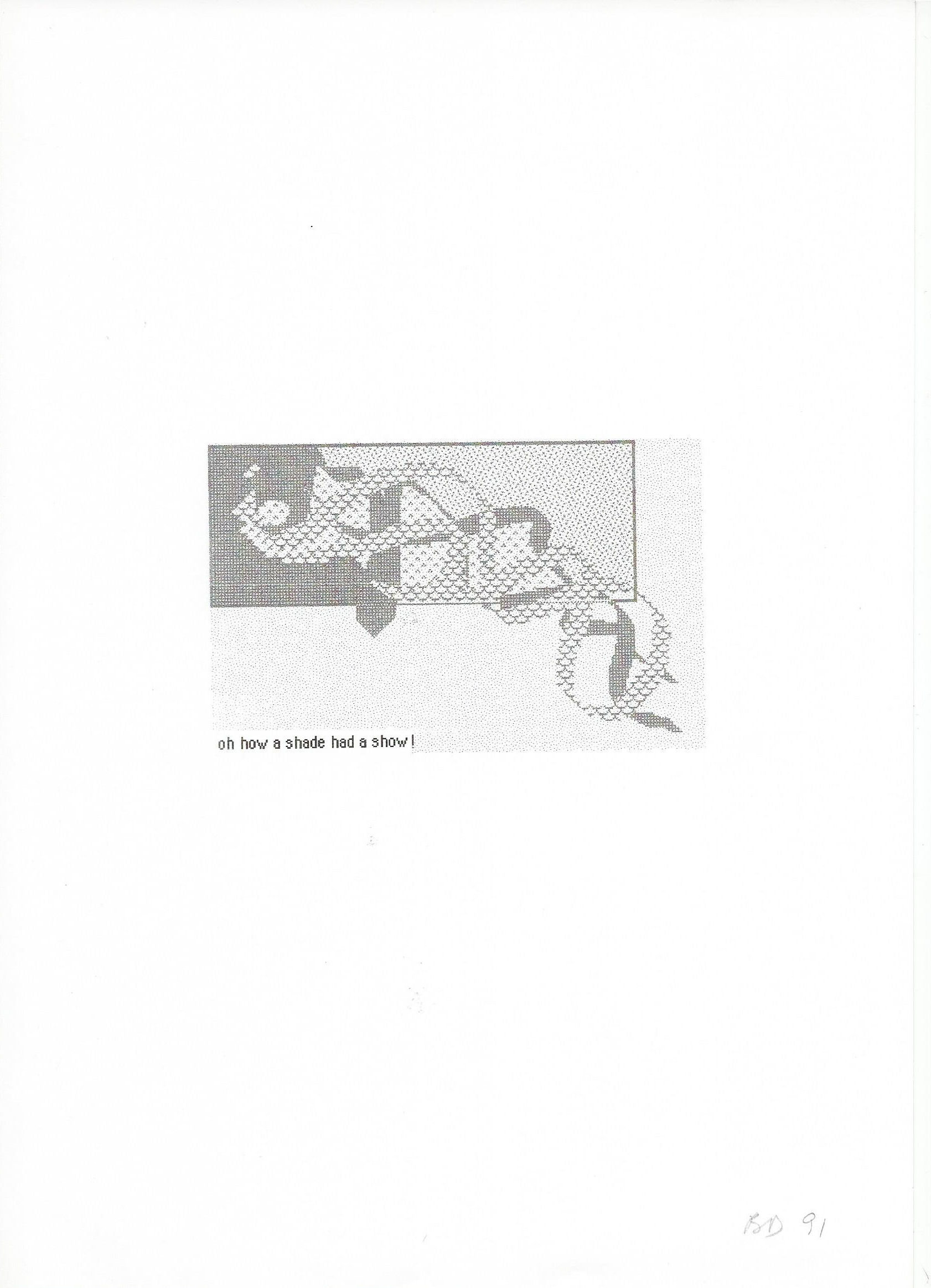
- 1992 - Roy Ascott, Telenoia.
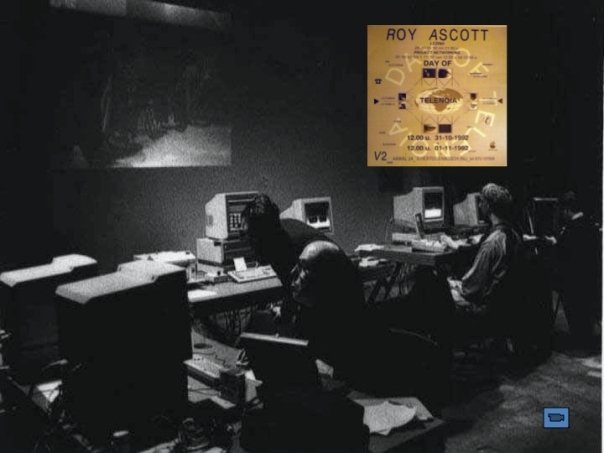
- 1992 - Christa Sommerer et Laurent Mignonneau, Interactive Plant Growing.
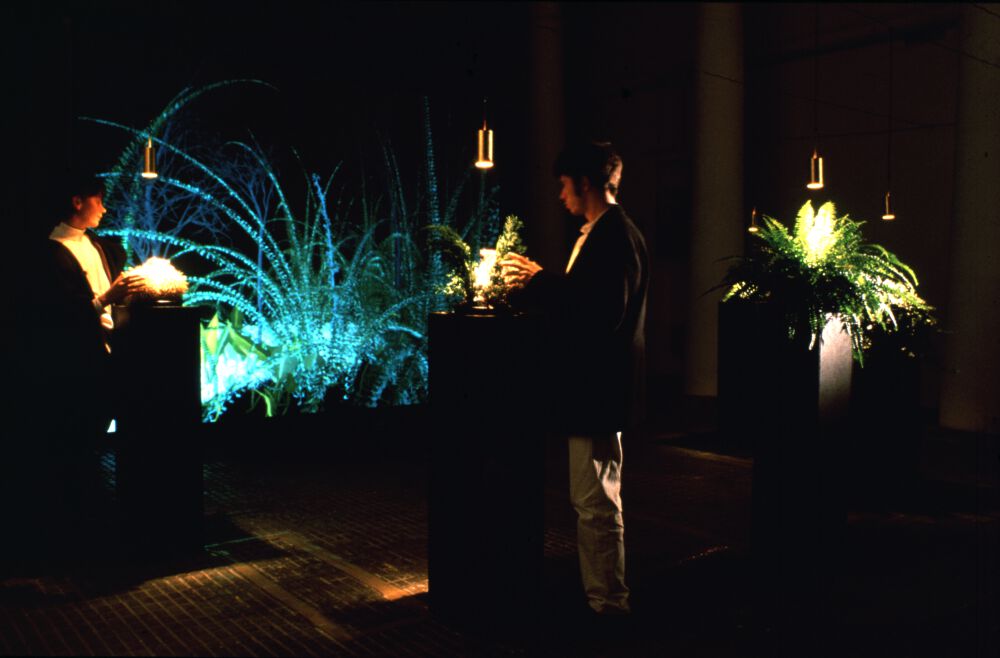
- 1997 - Jeffrey Shaw, Configuring The Cave.
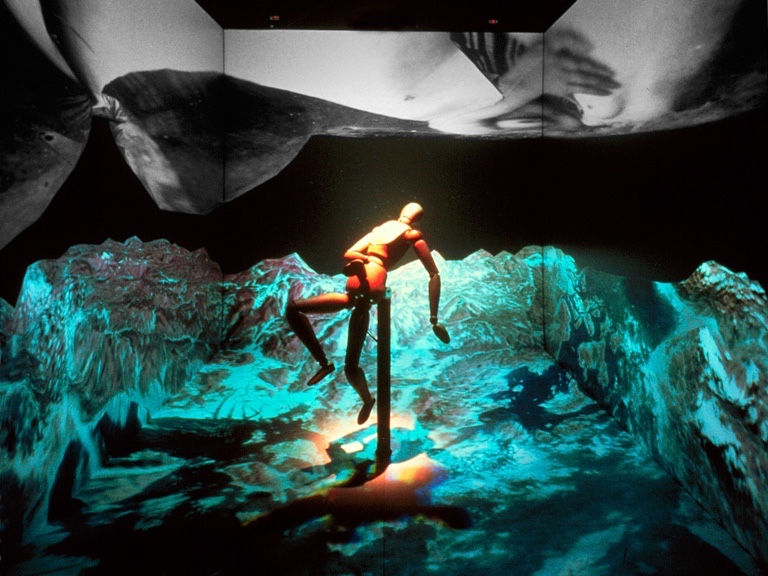
- 1997 - Maurice Benayoun, World Skin.
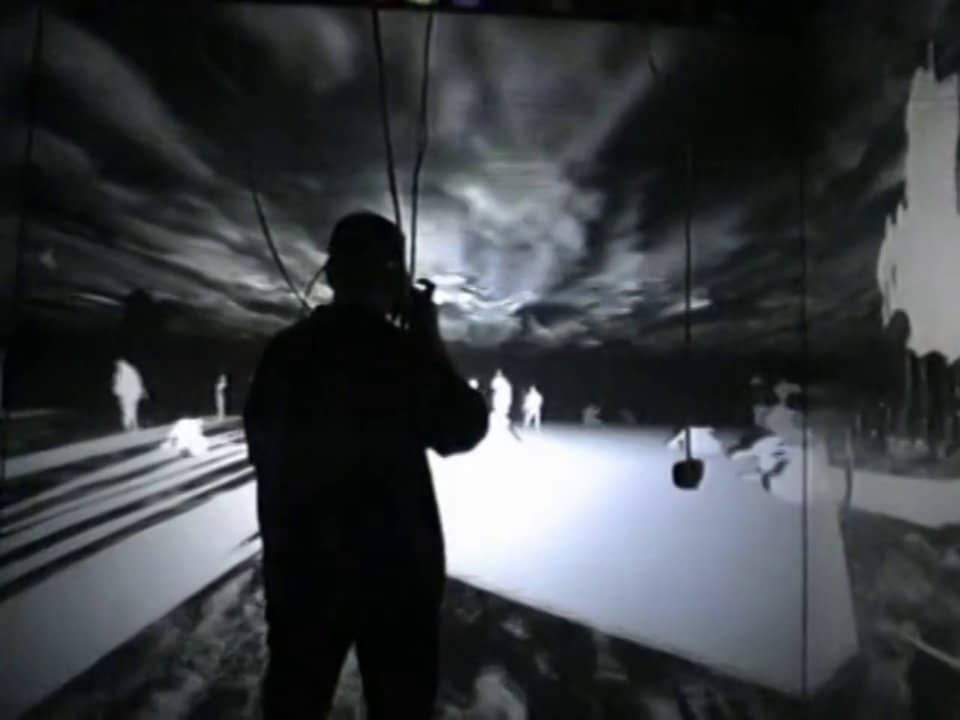
- 1998 - Creation of Google.
- 2000 - Miguel Chevalier, Nuage Fractal.
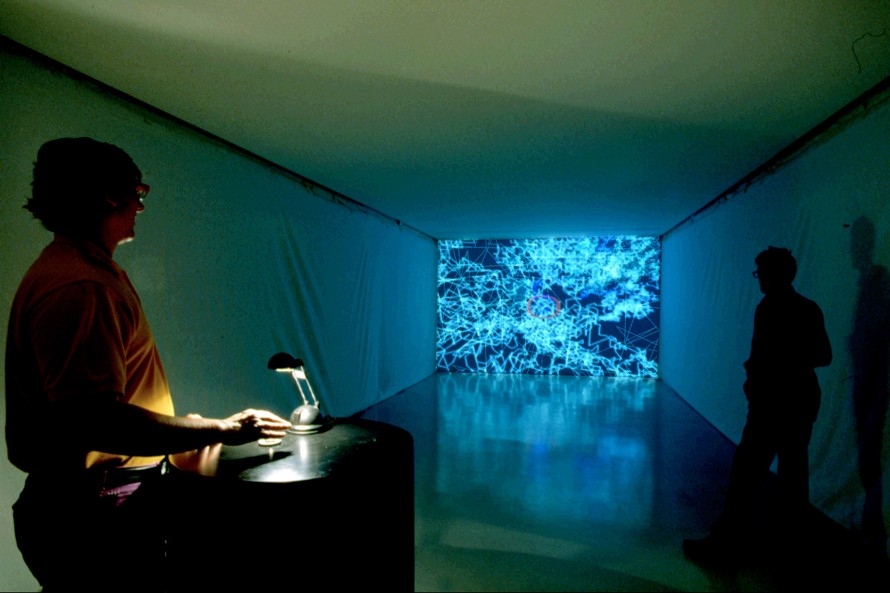
- 2001 - Casey Reas, Path Series.
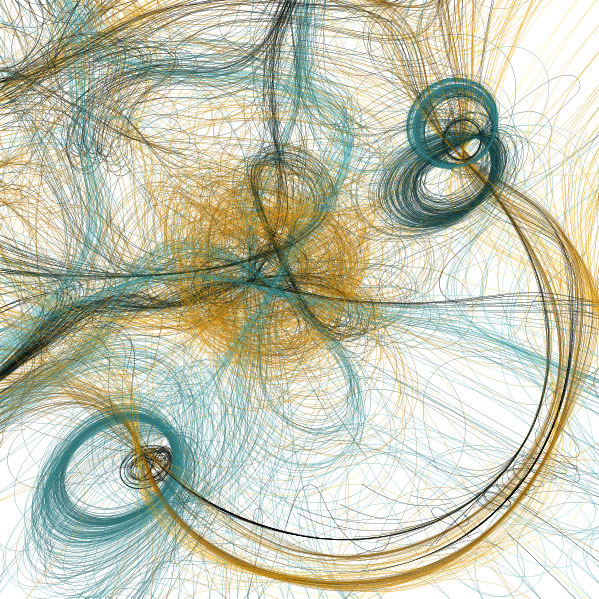
- 2001 - Launch of Processing by Casey Reas and Ben Fry, download here.
- 2002-2014 - Casey Reas, Microimages.
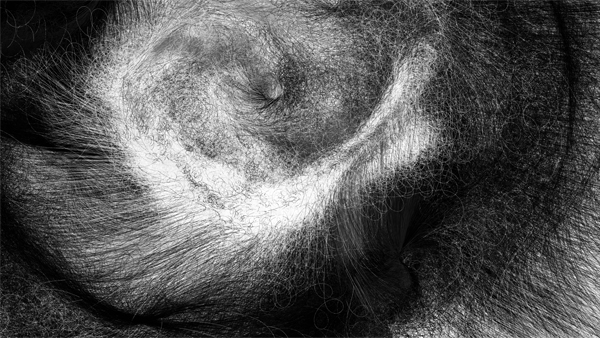
- 2004 - Creation of Facebook.
- 2007 - iPhone 2G by Apple.
- 2013 - Patrick Tresset, Paul's Memories.
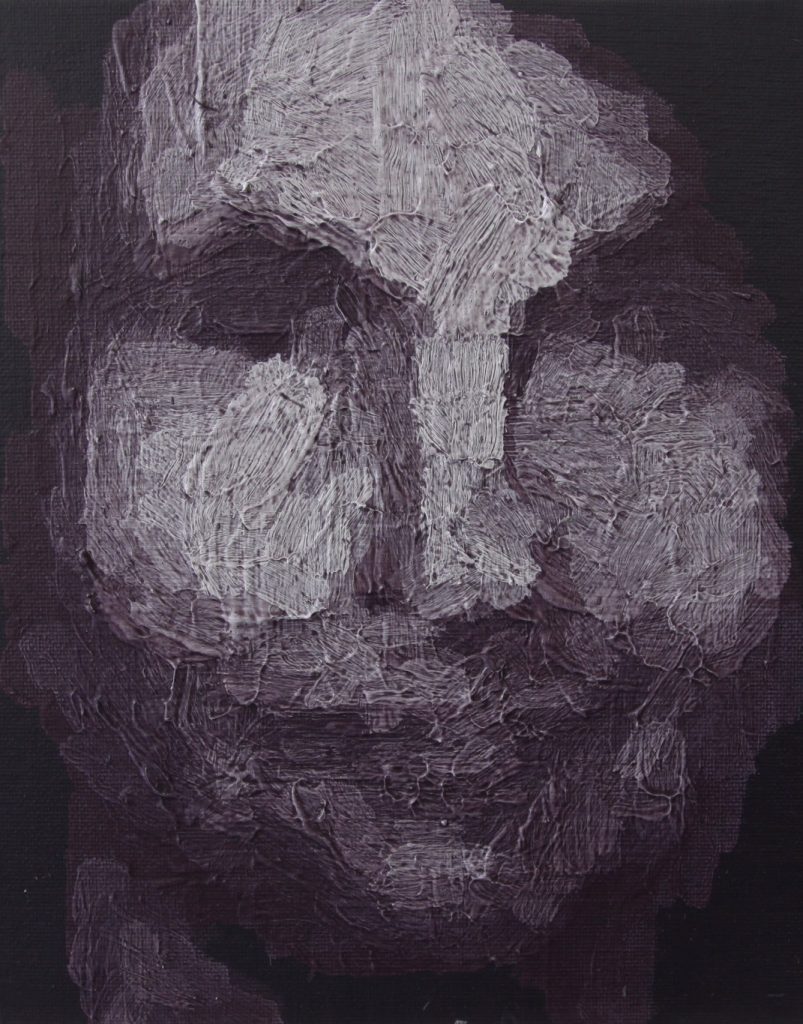
- 2015 - Casey Reas, KNBC.
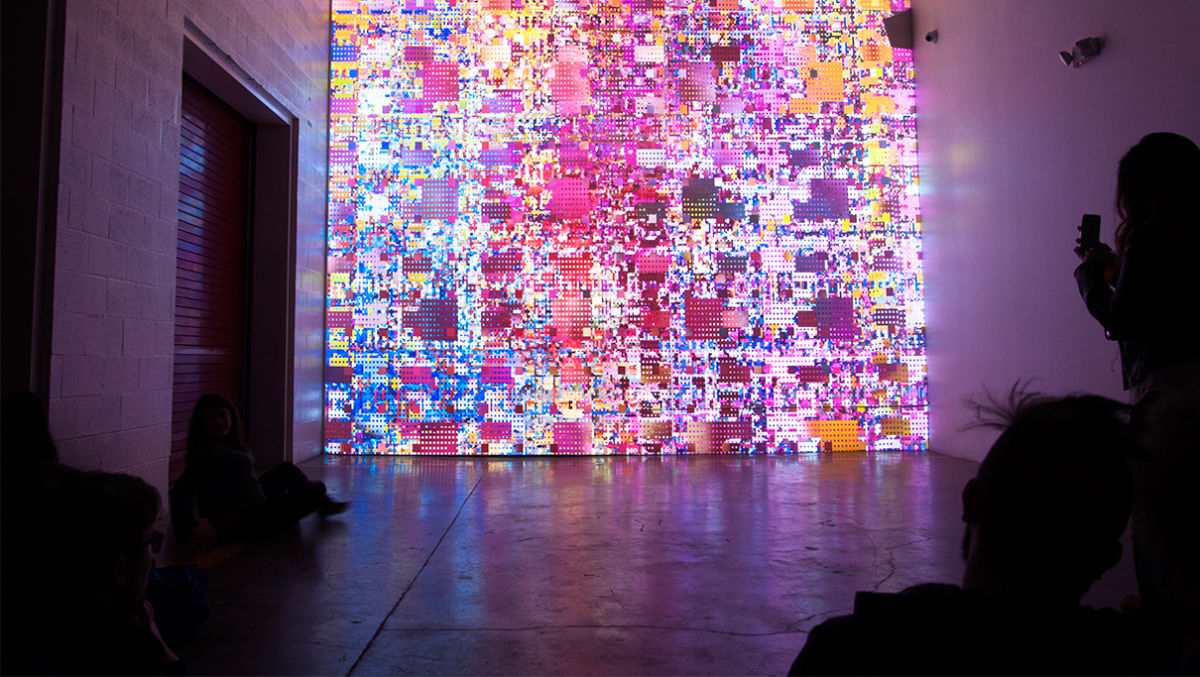
- 2020 - Casey Reas, RGB Drawings, plotter.
